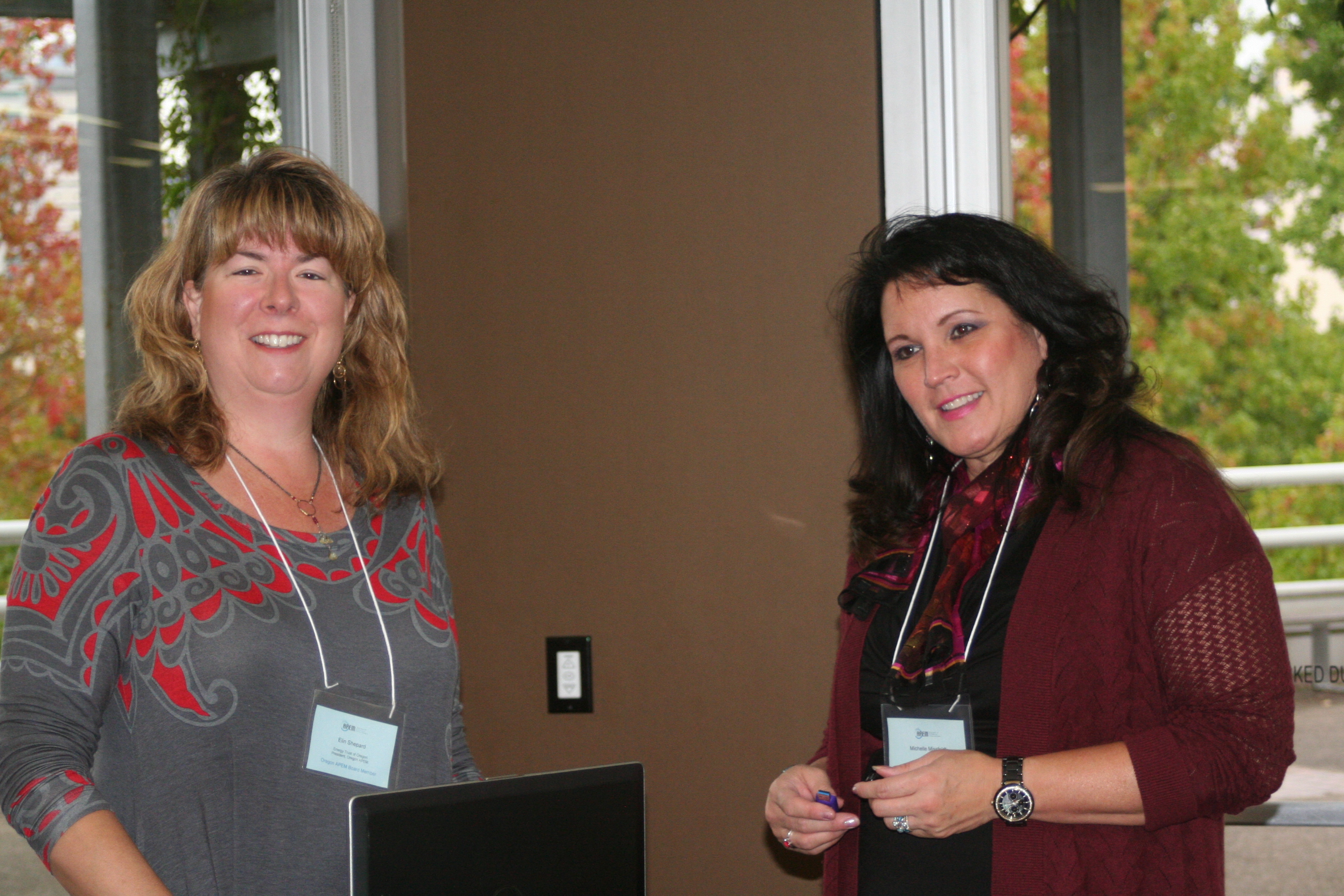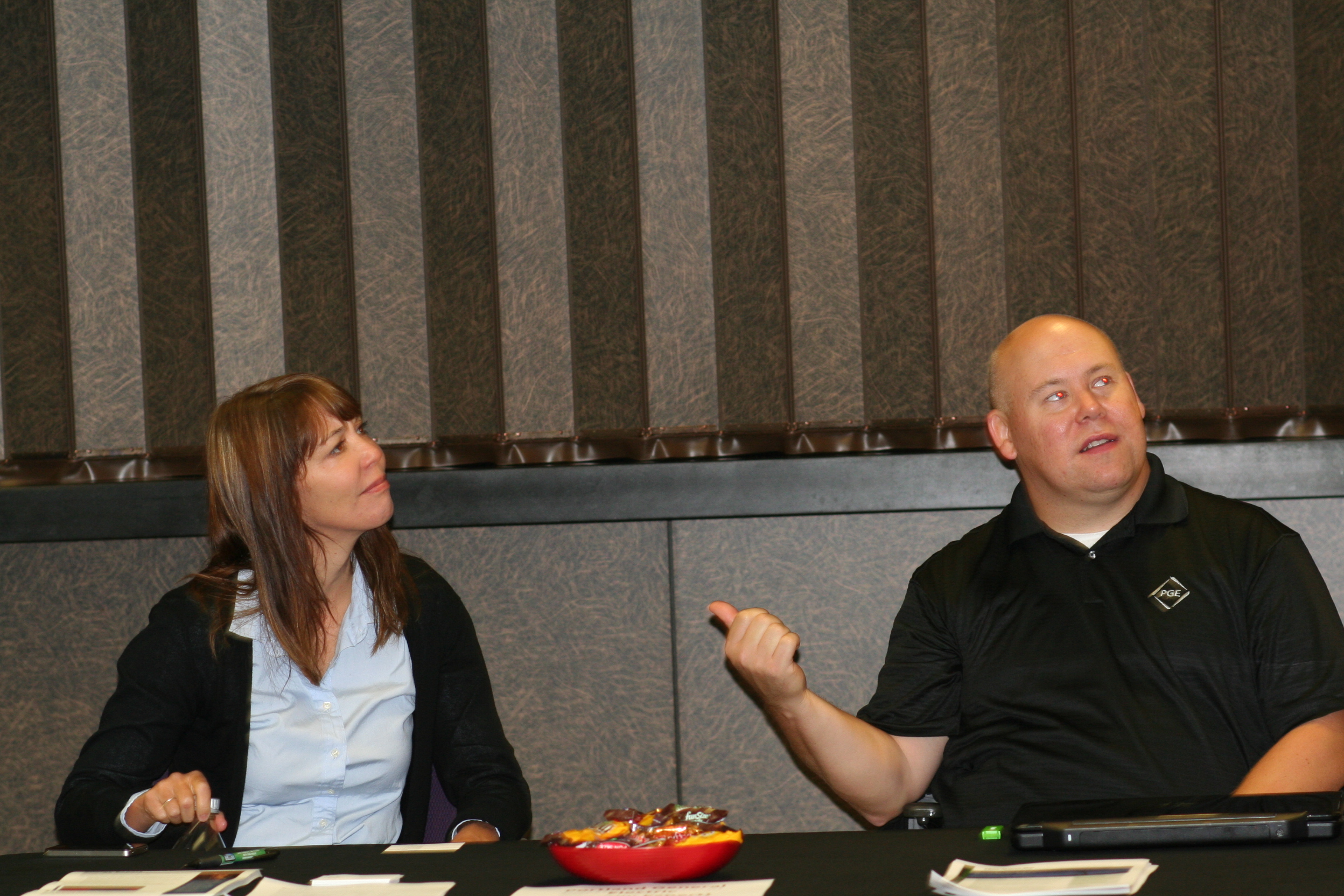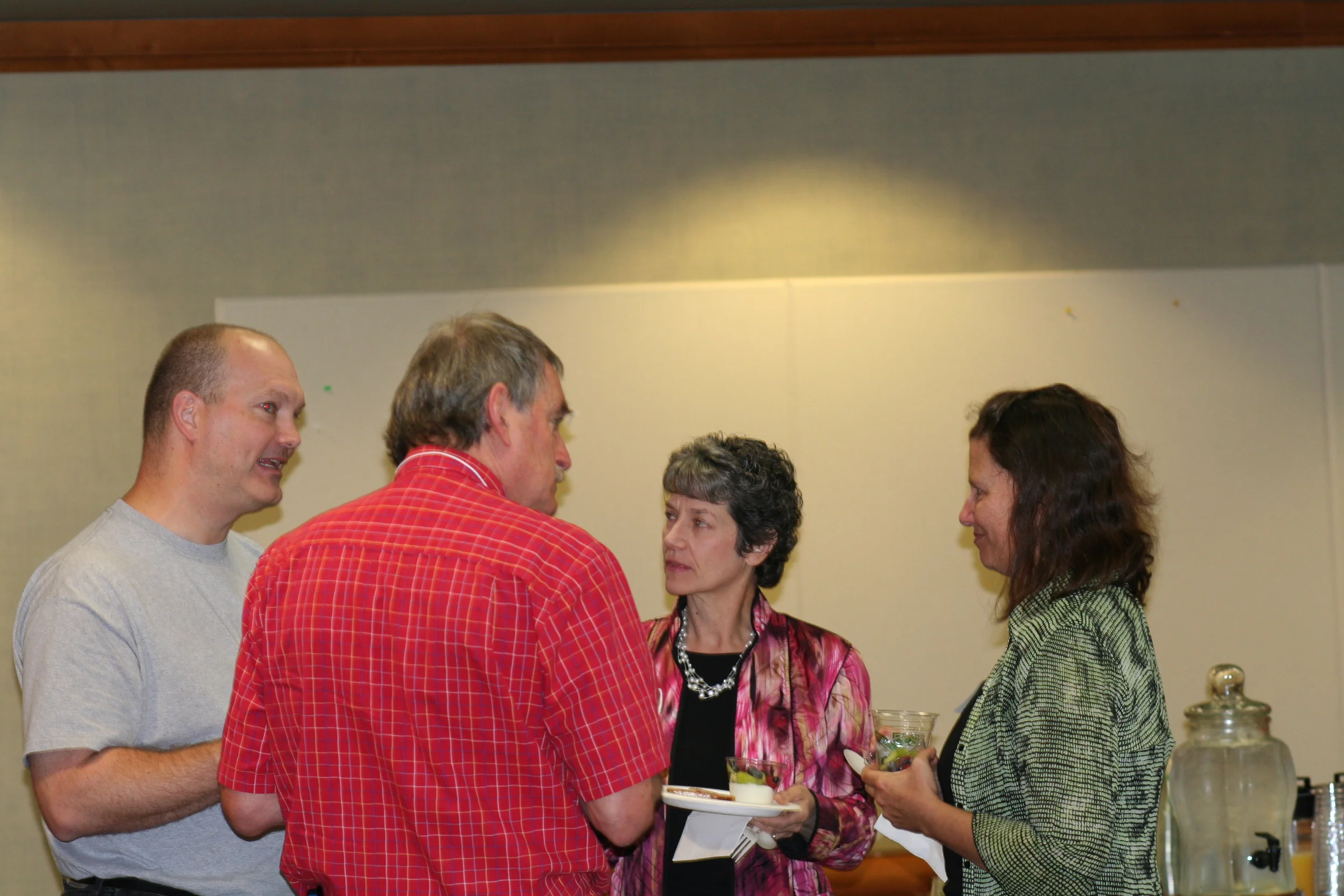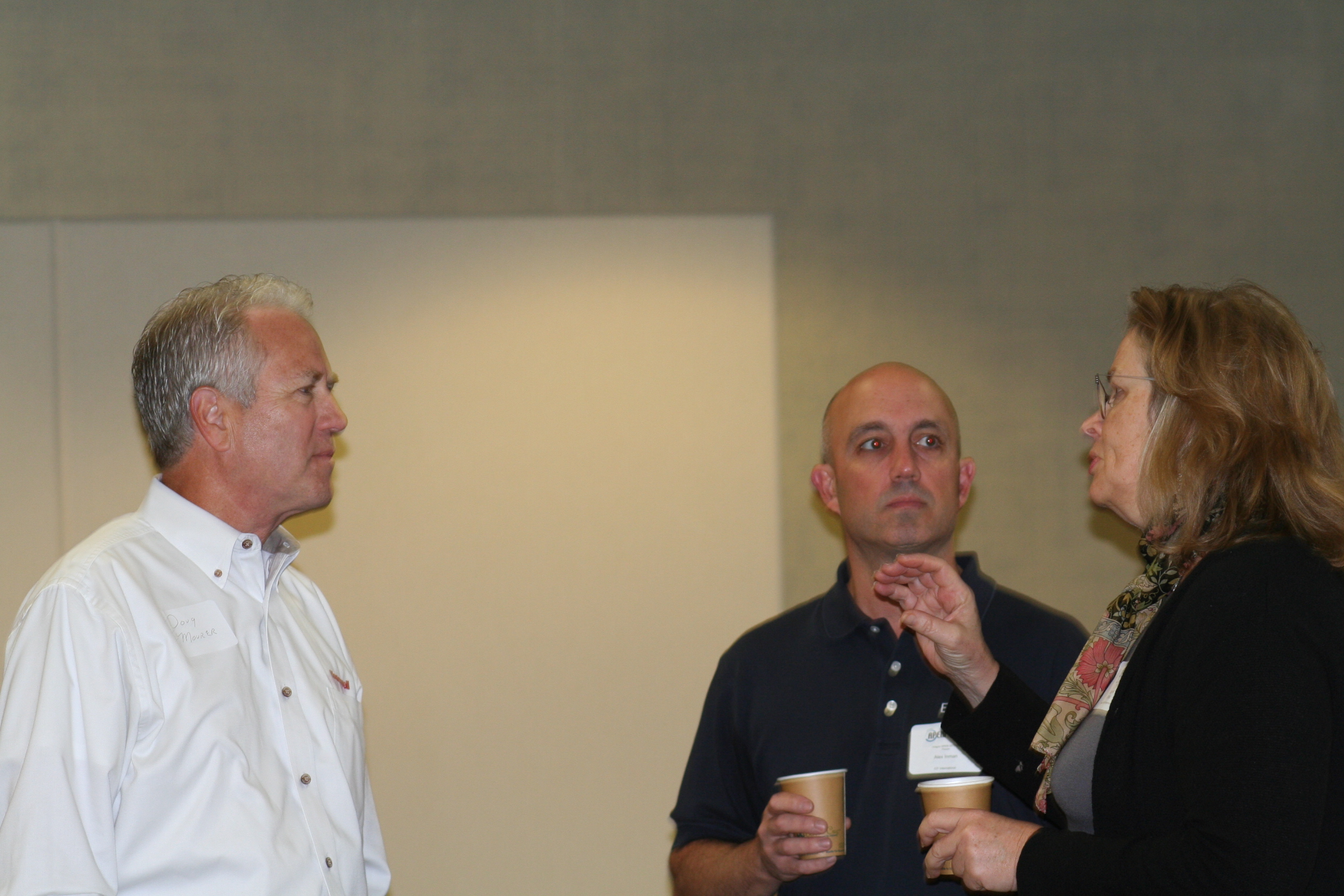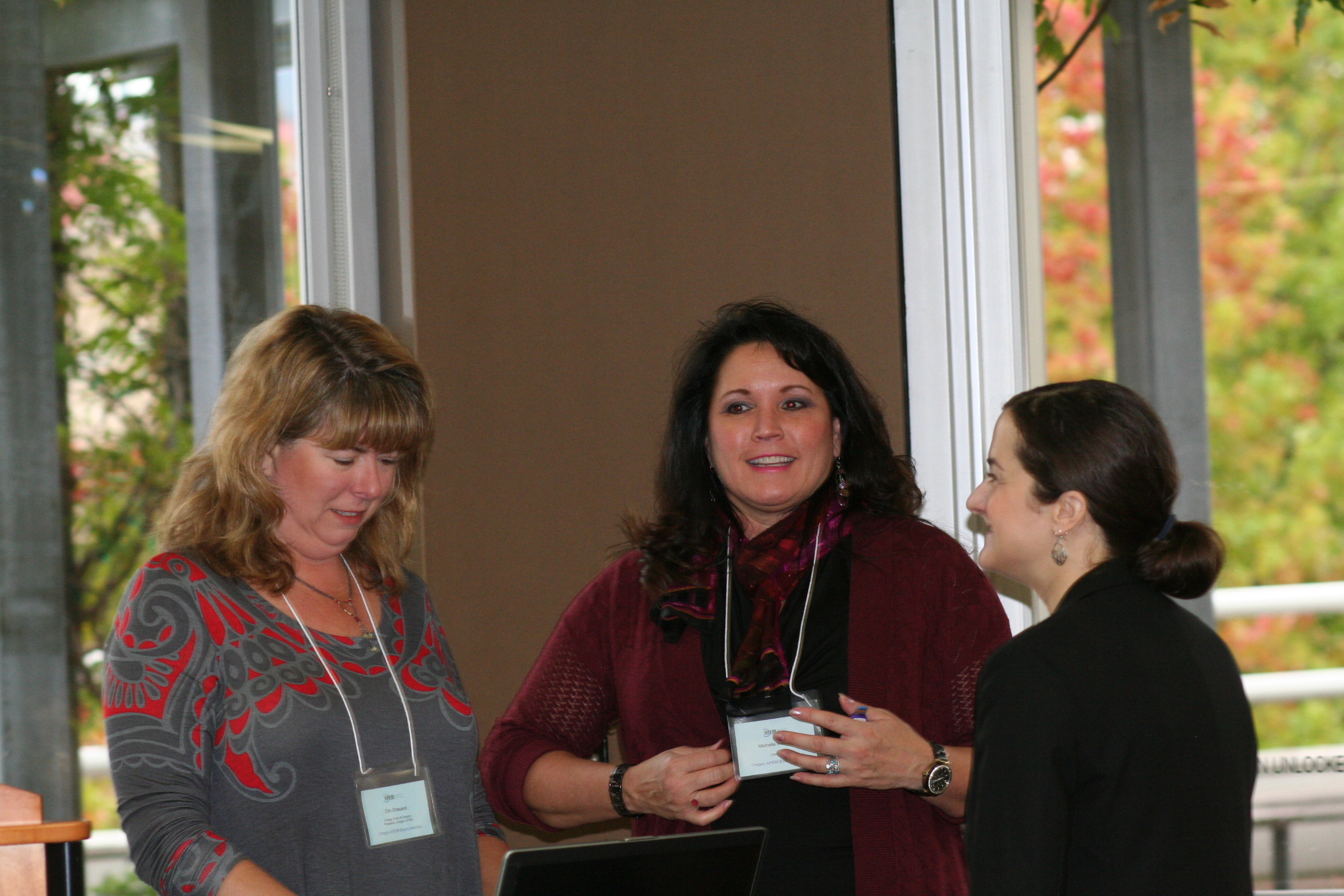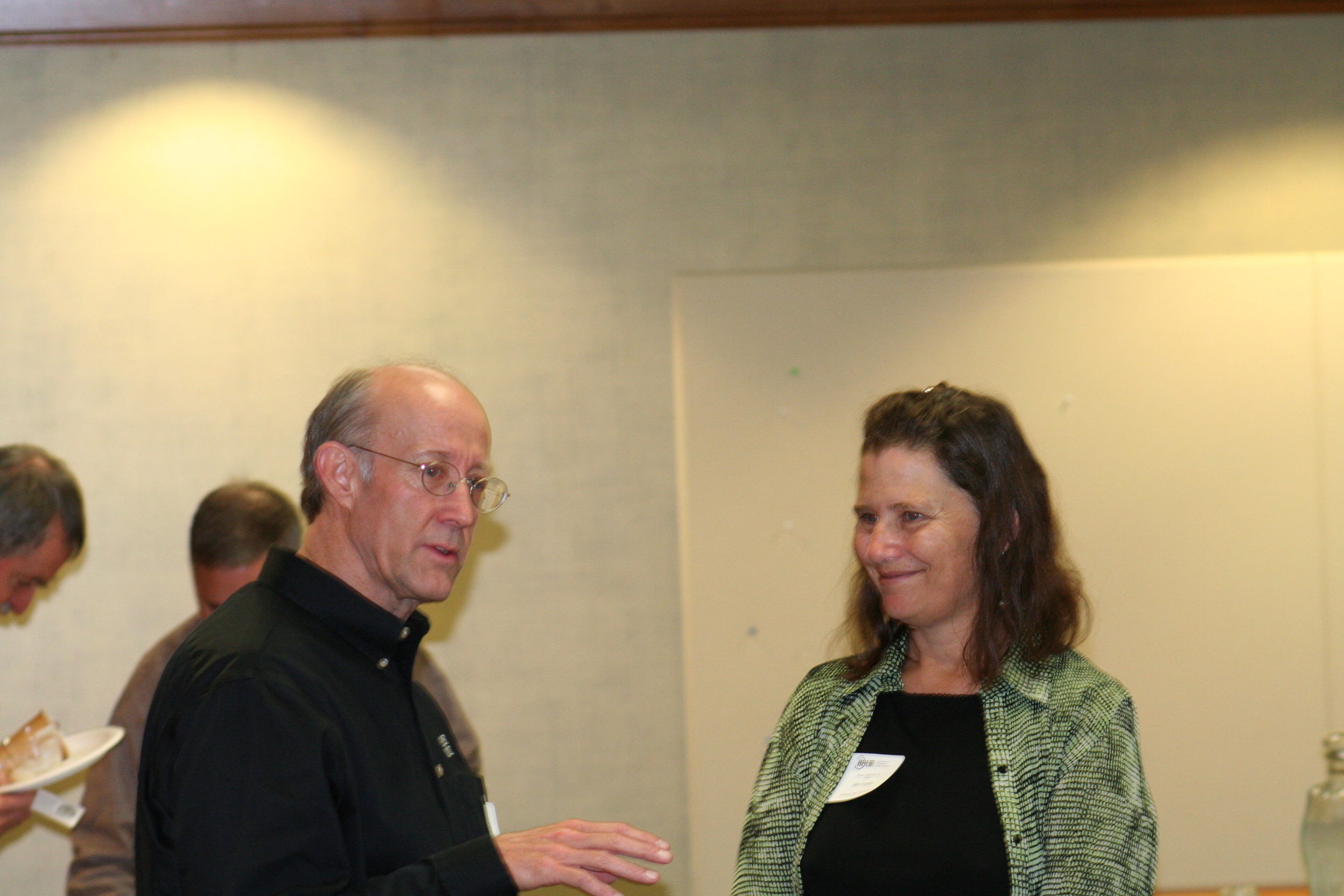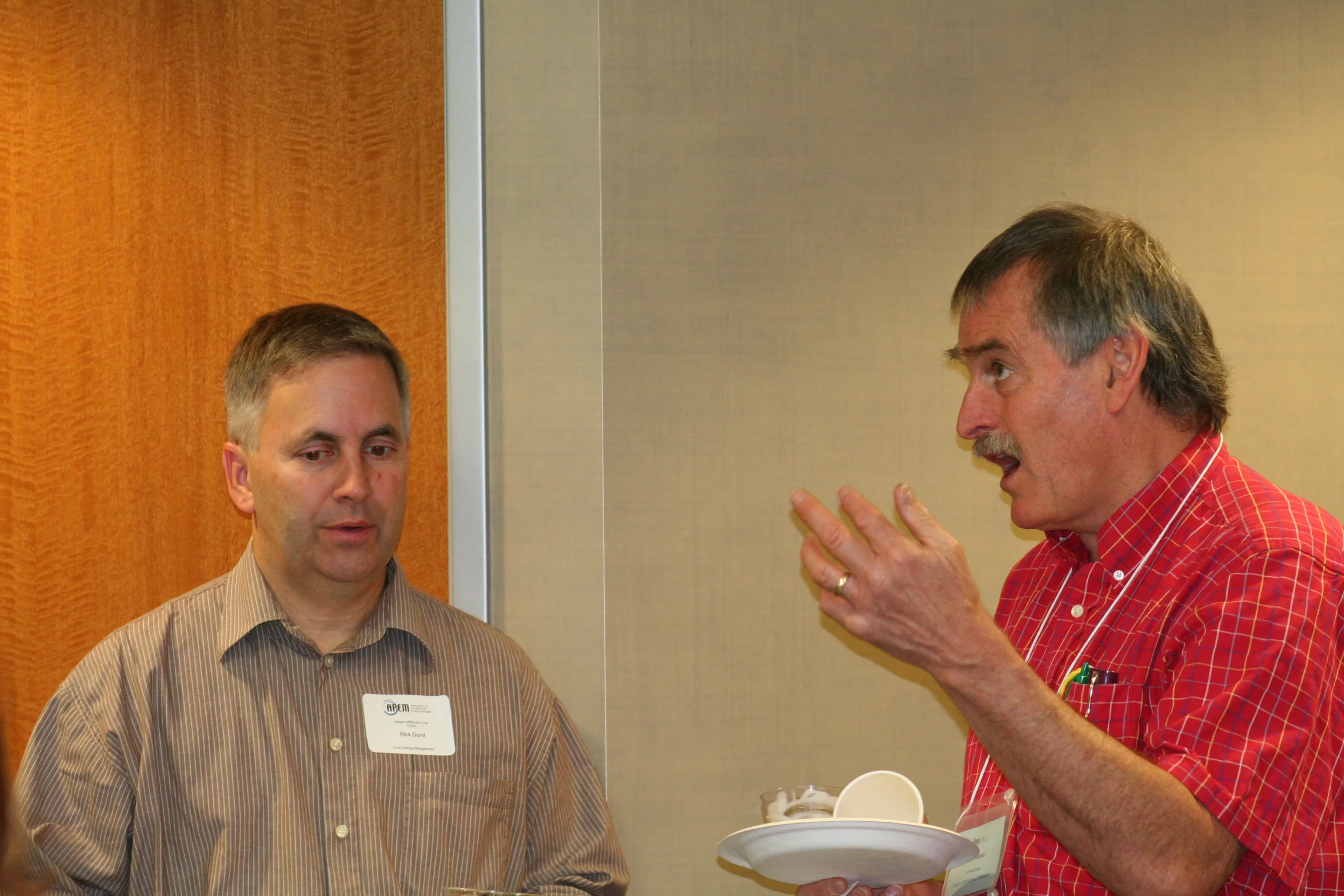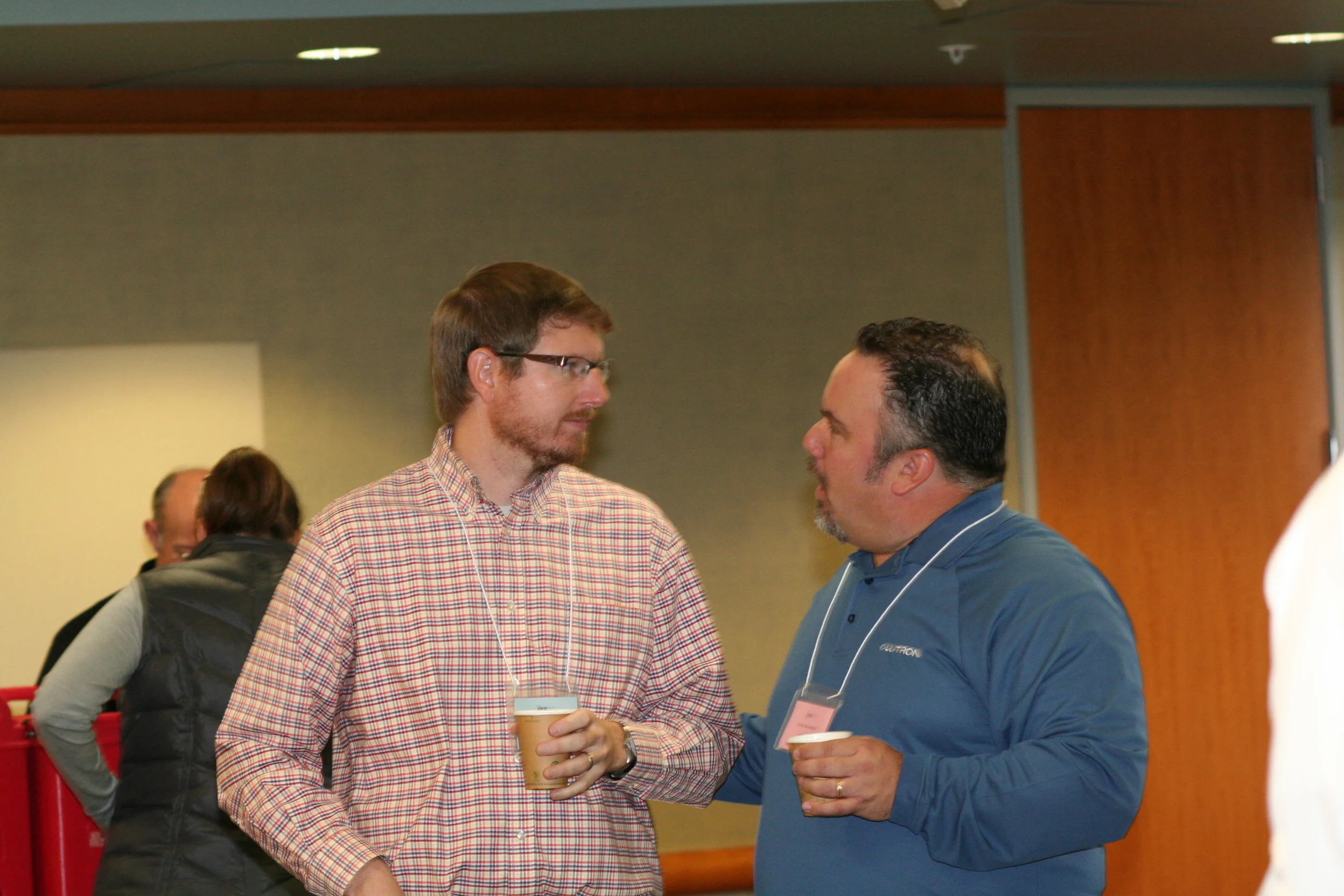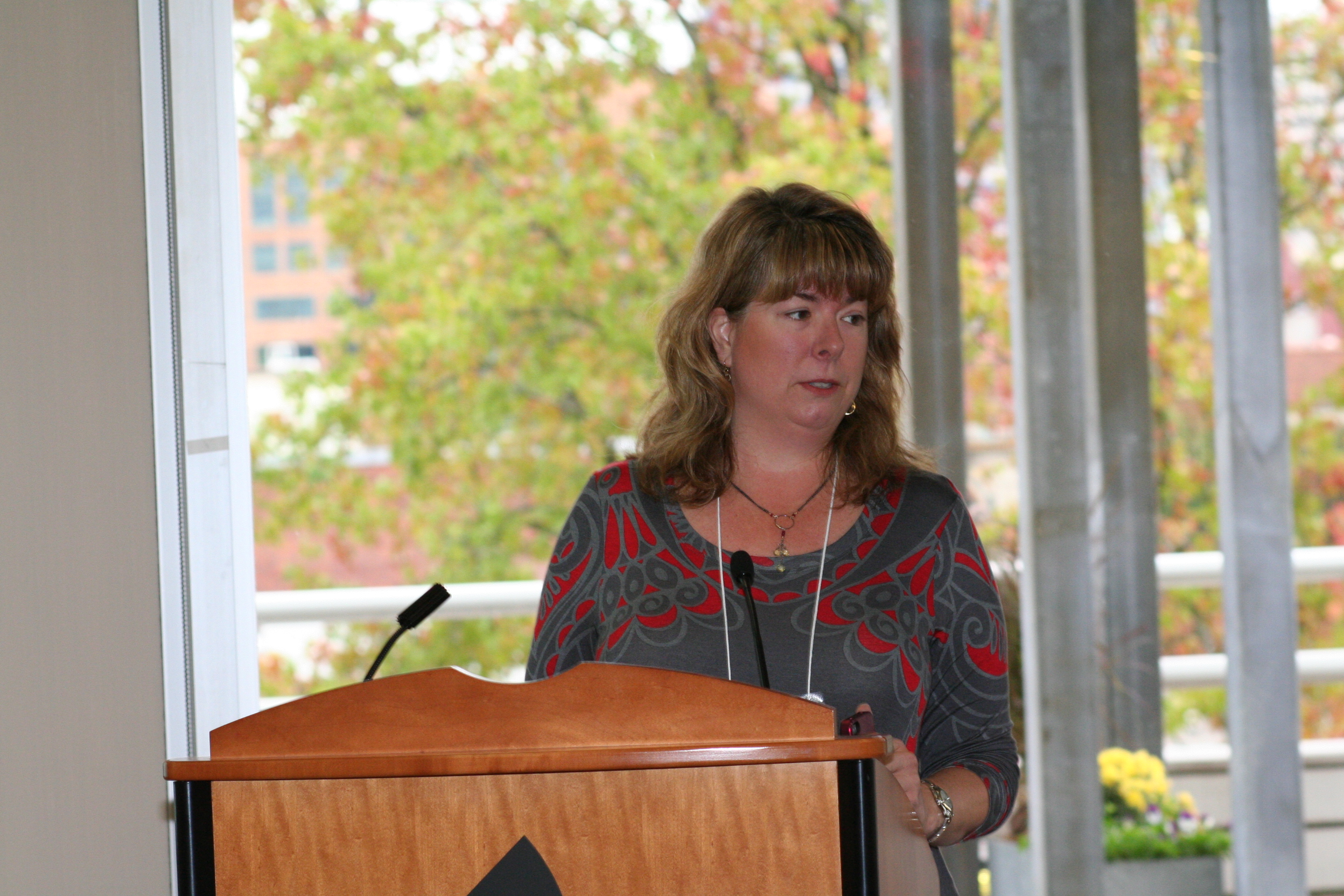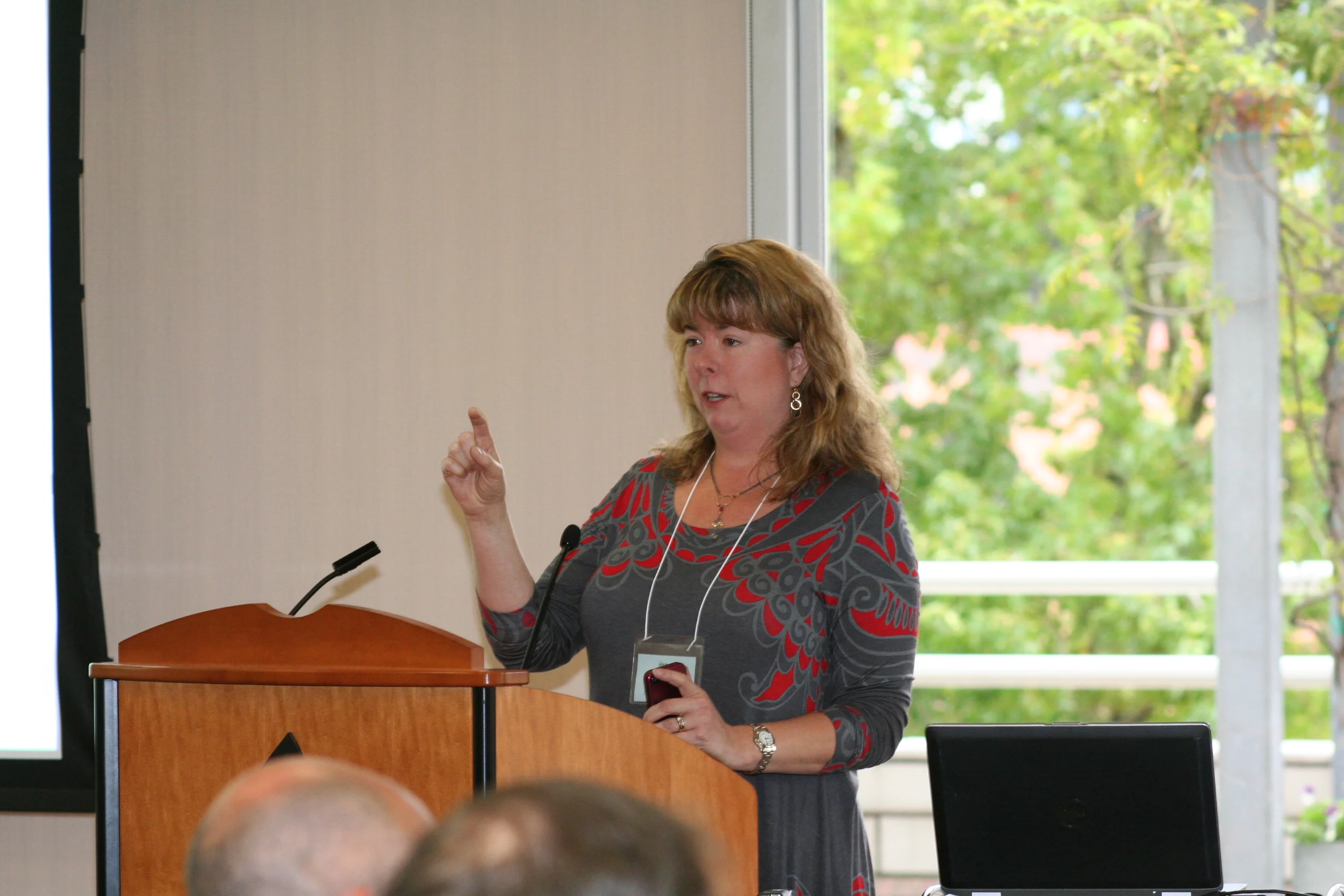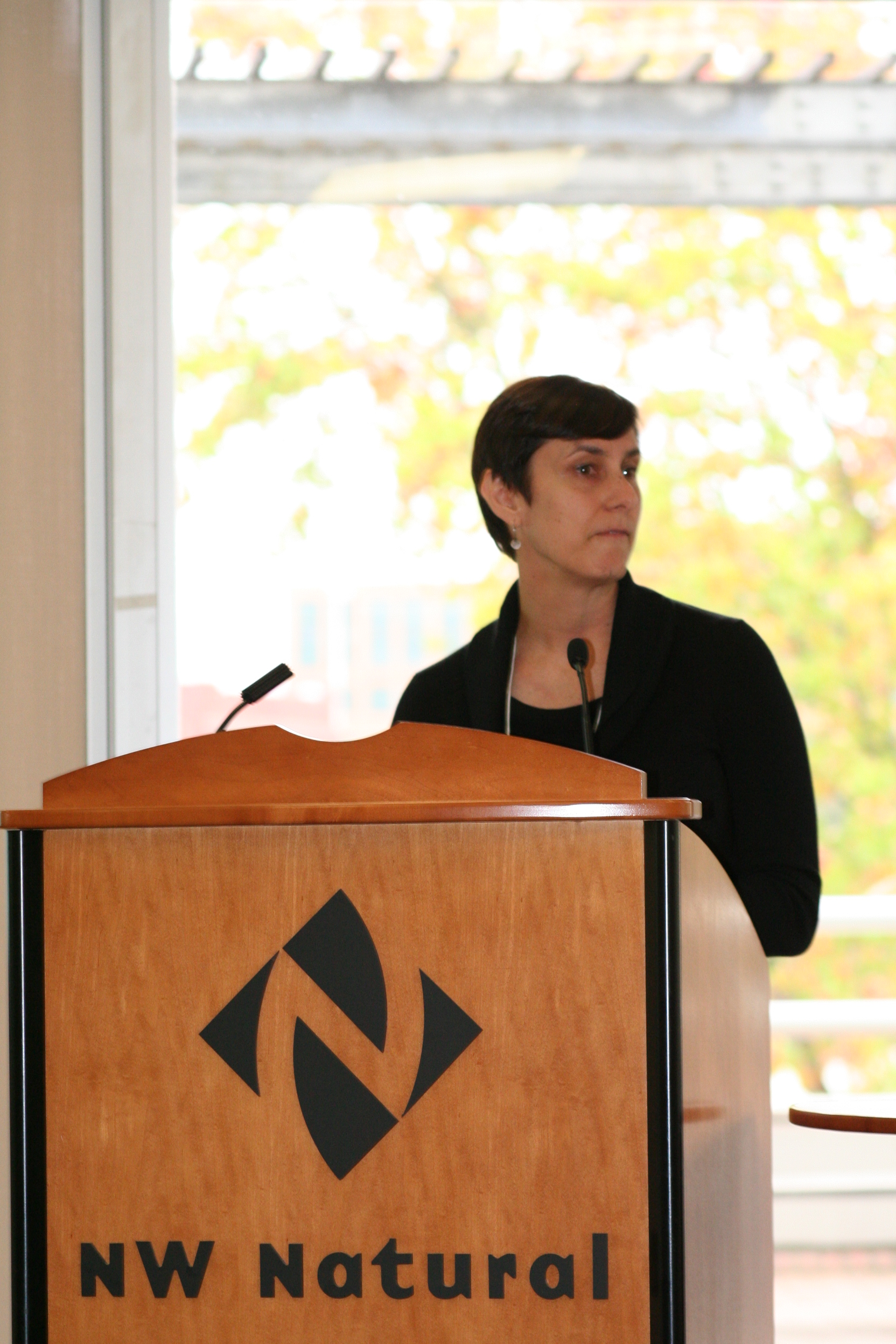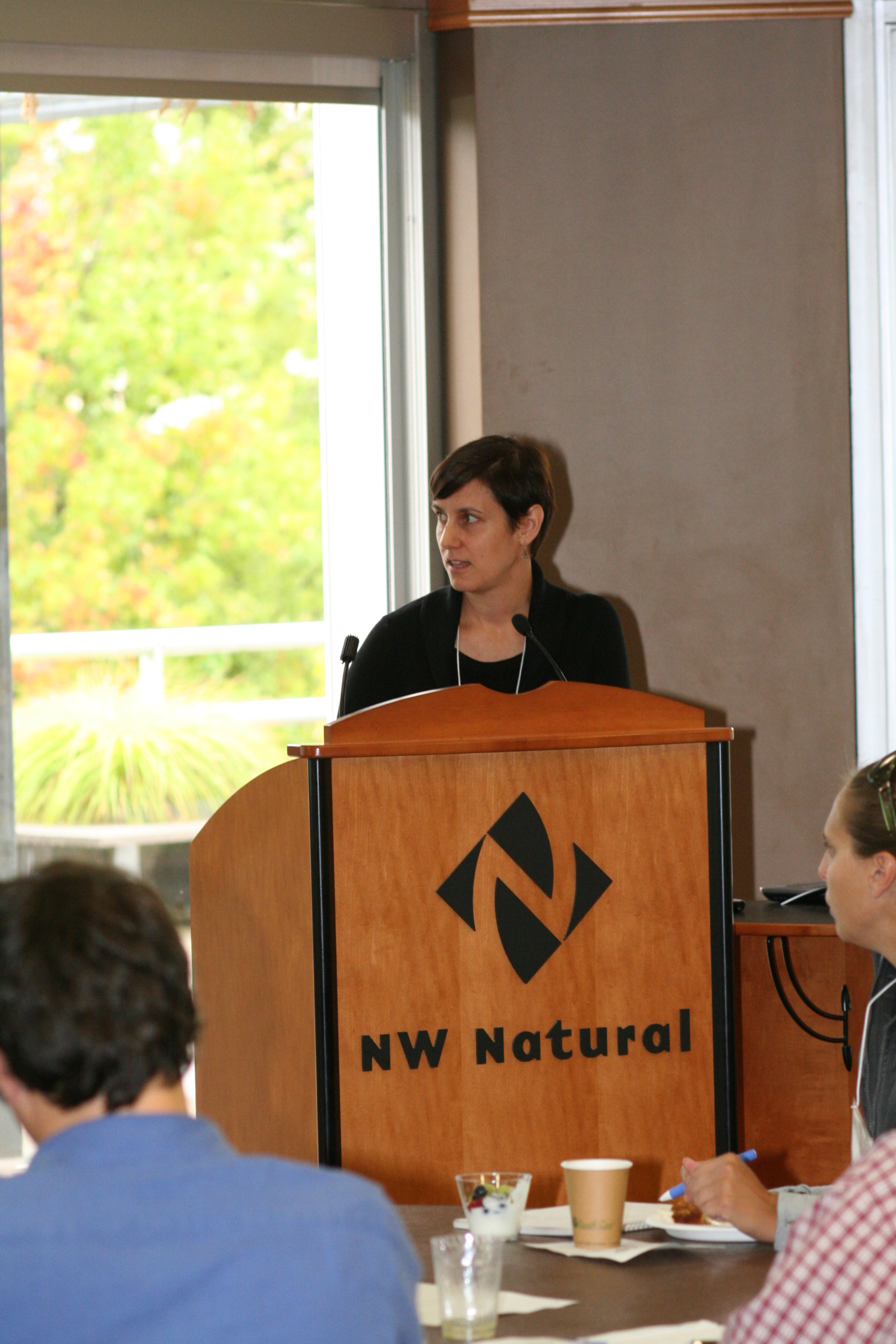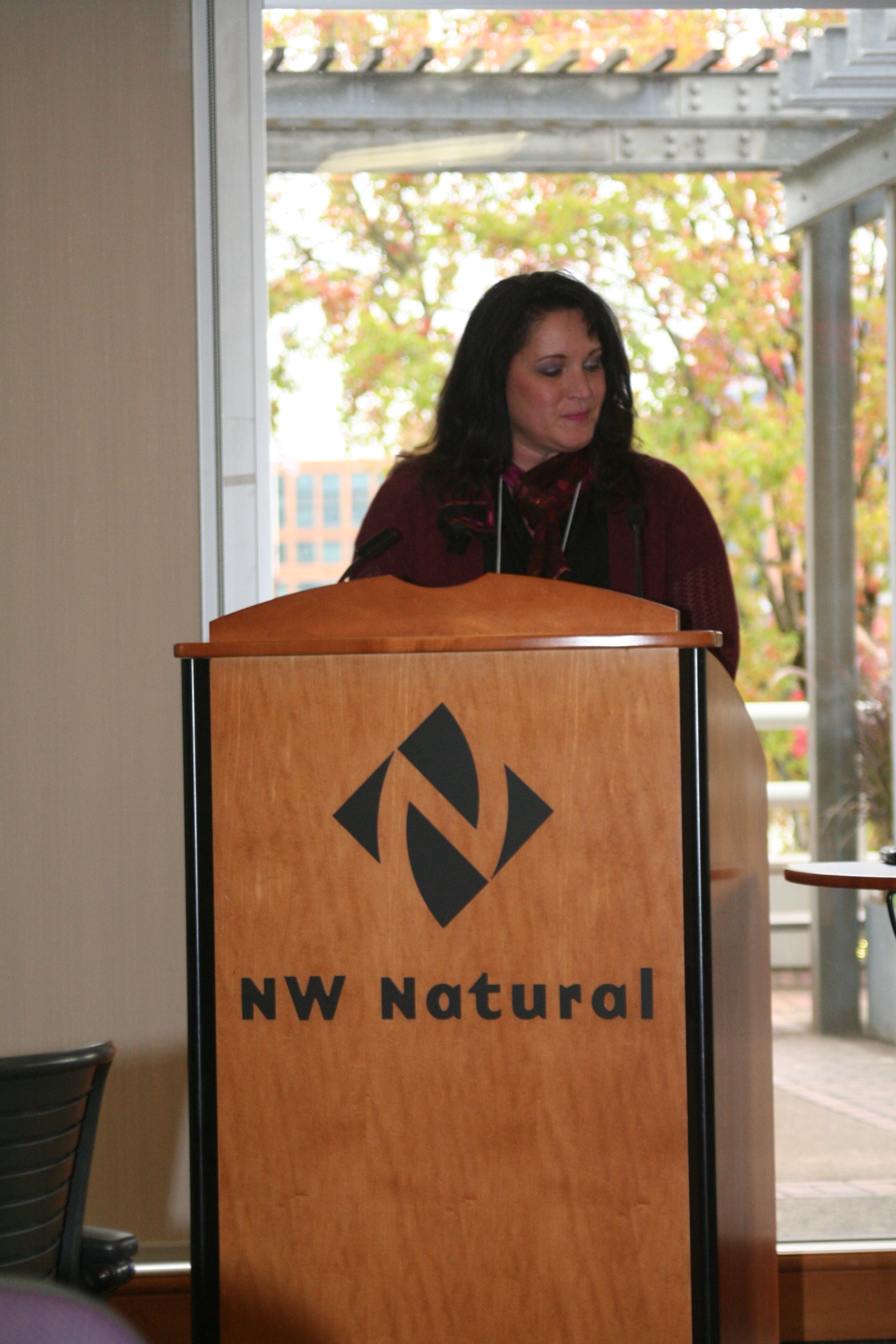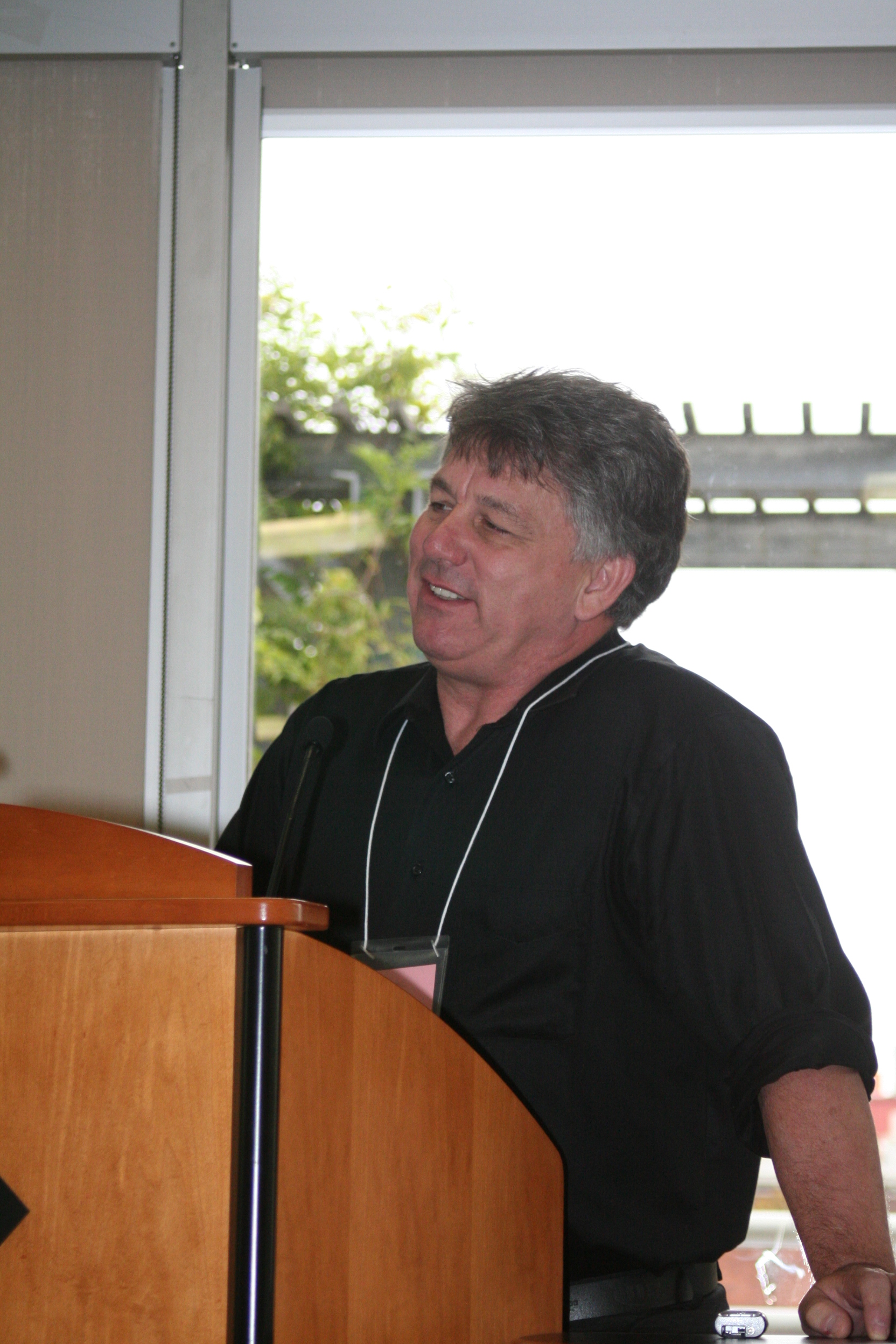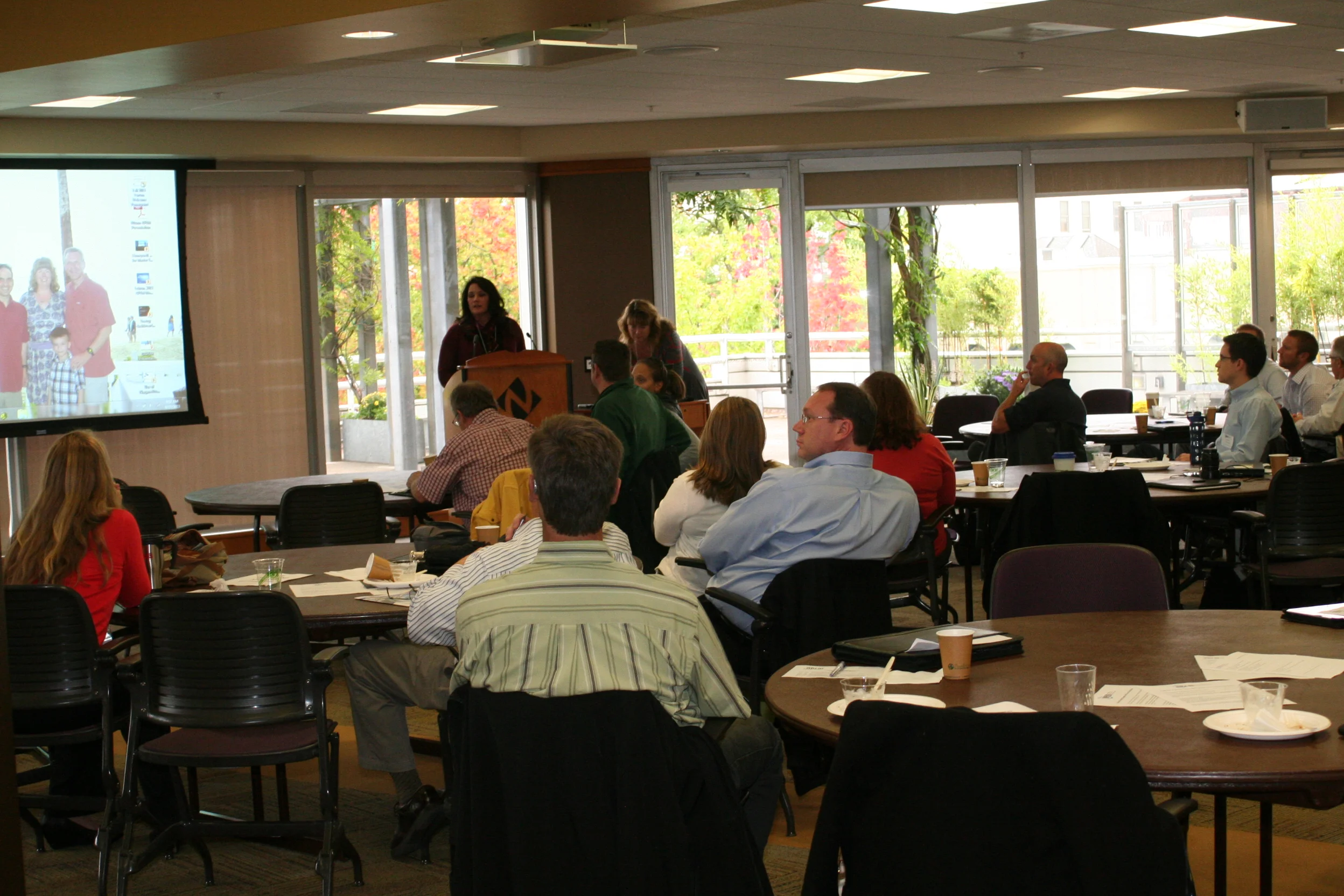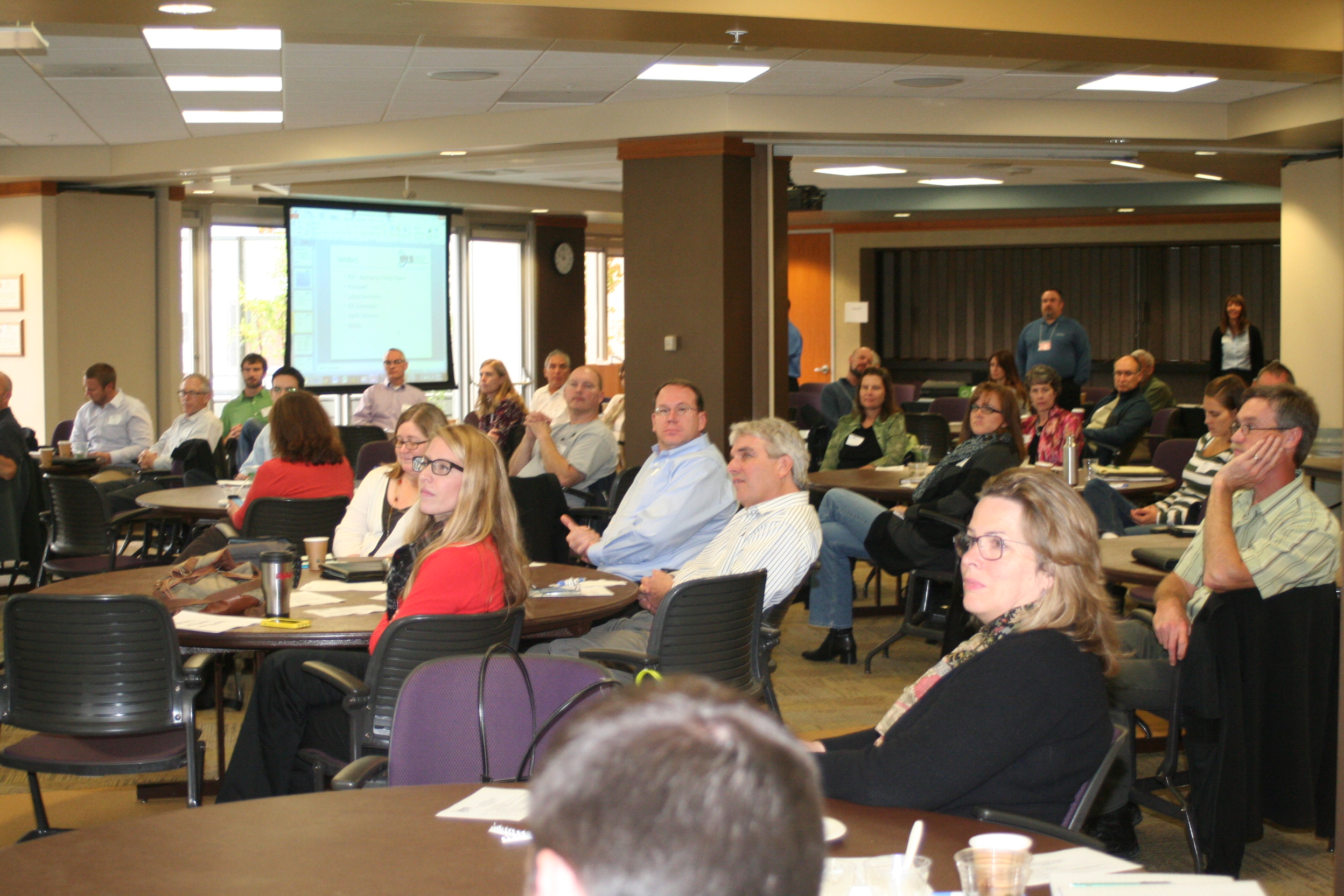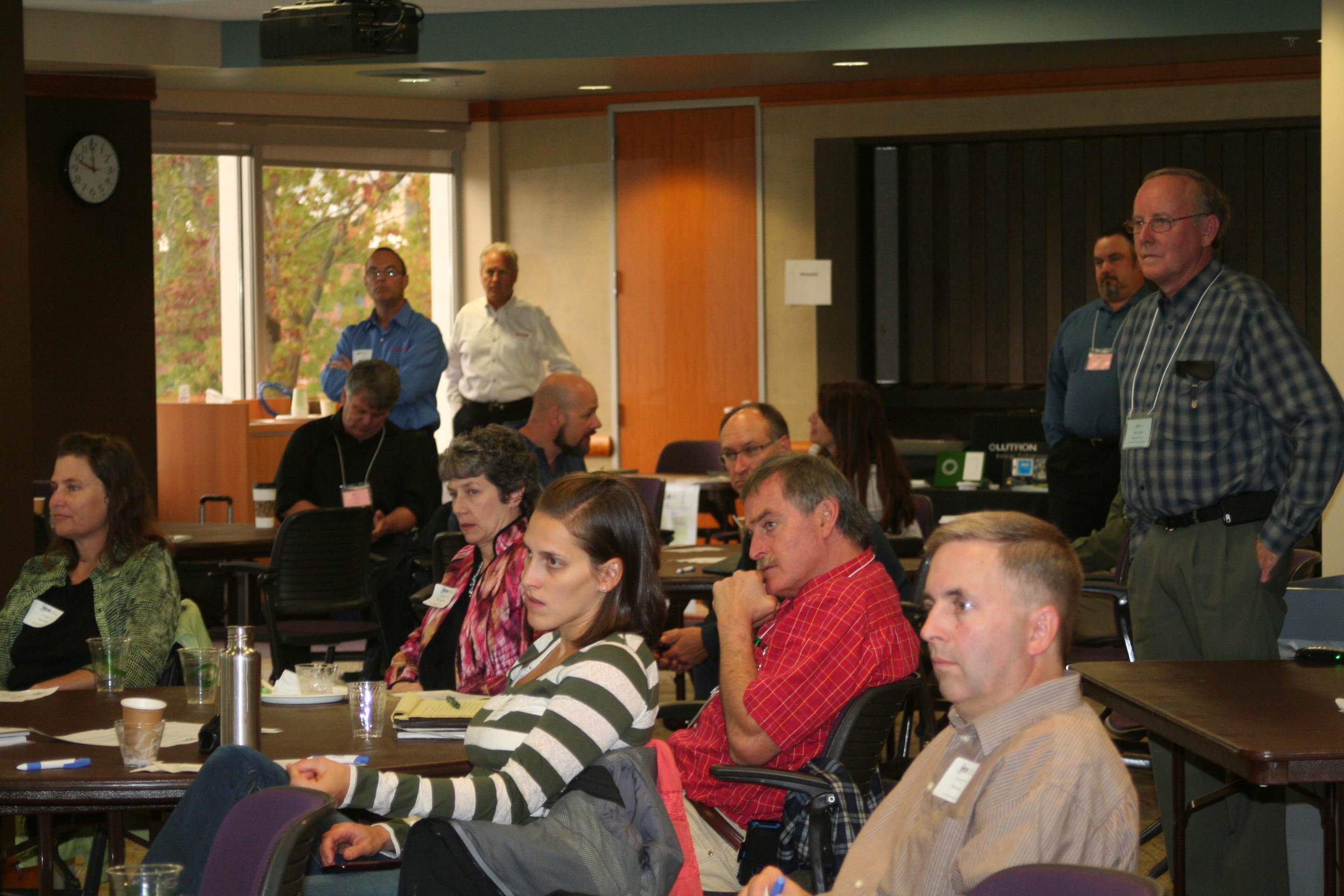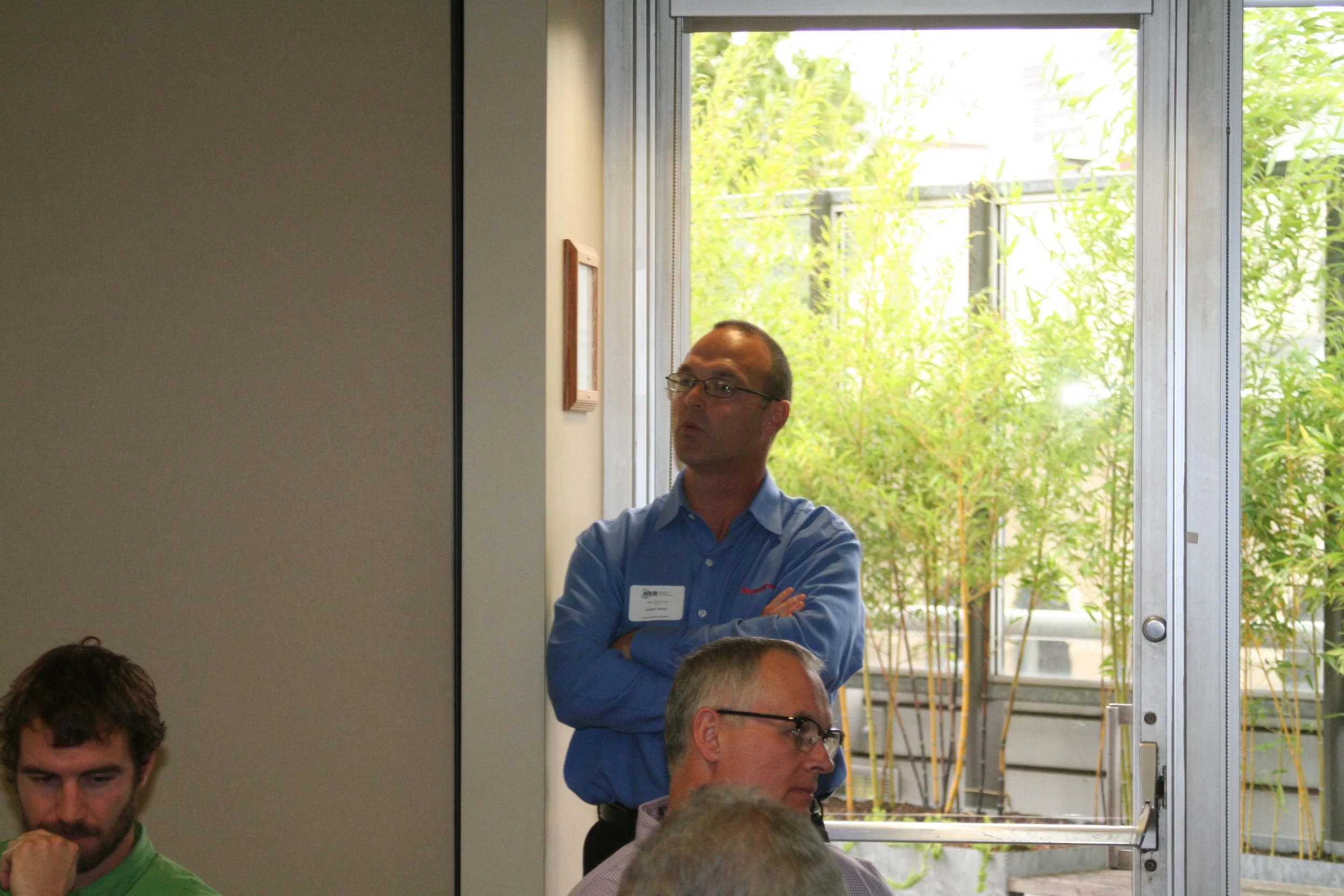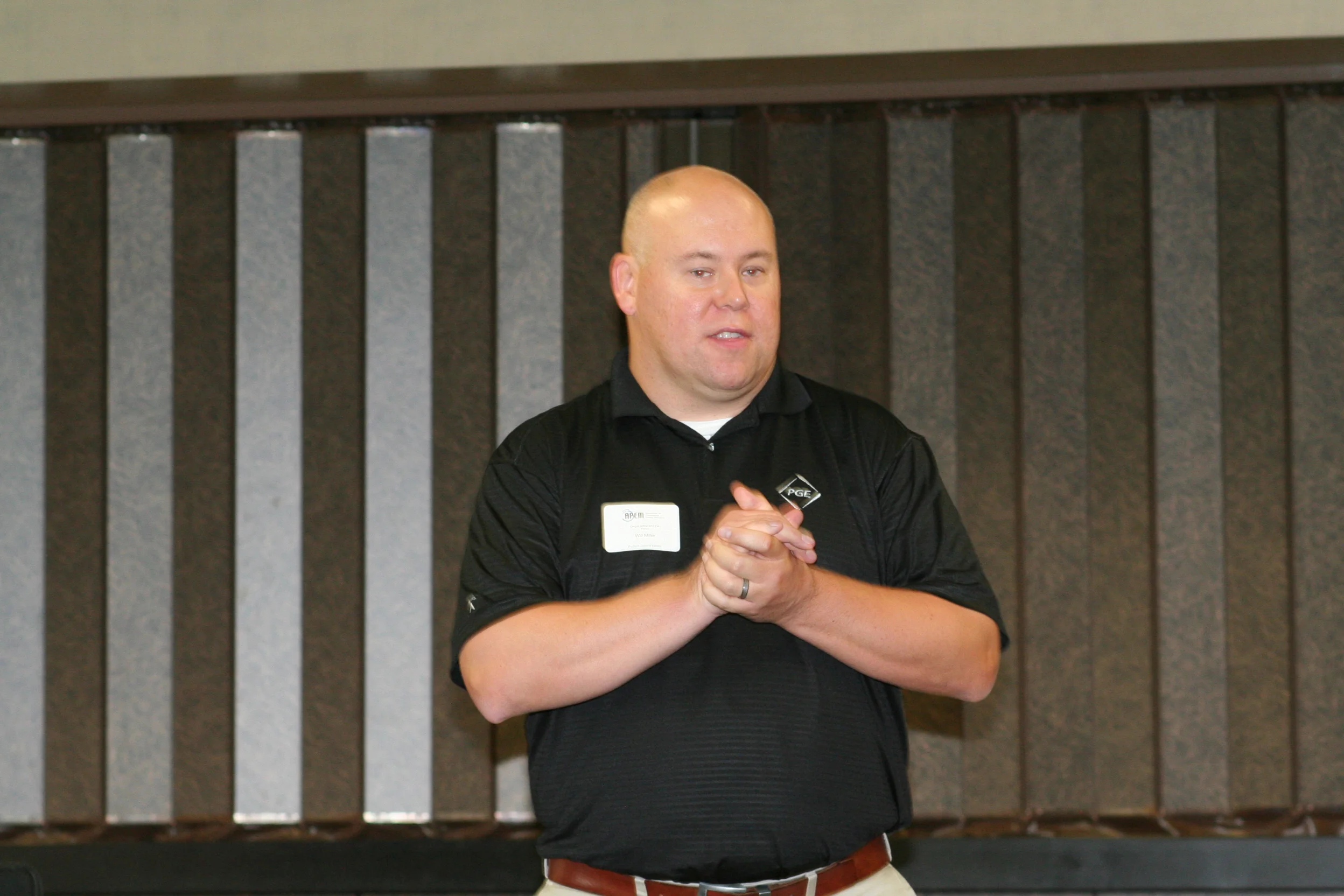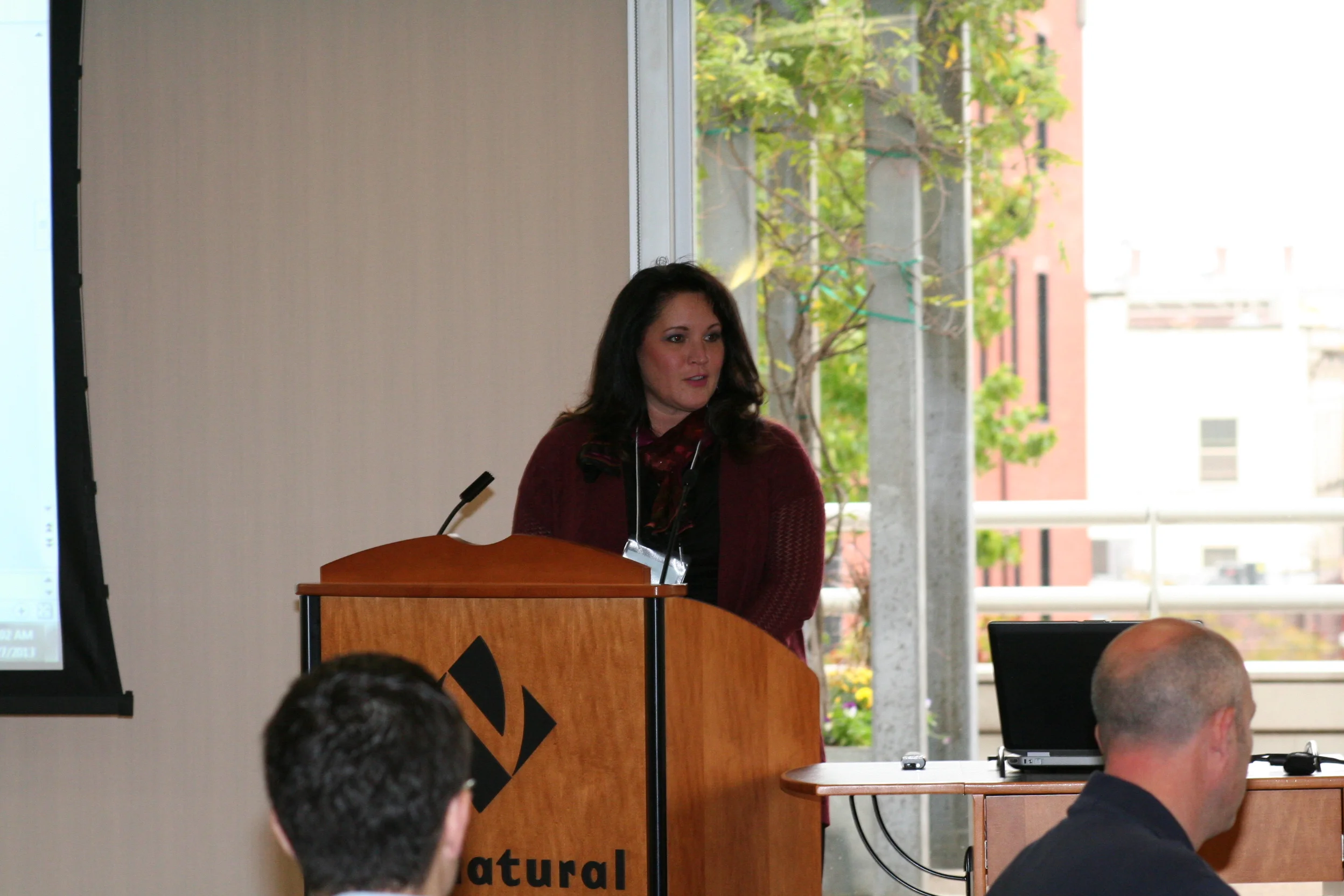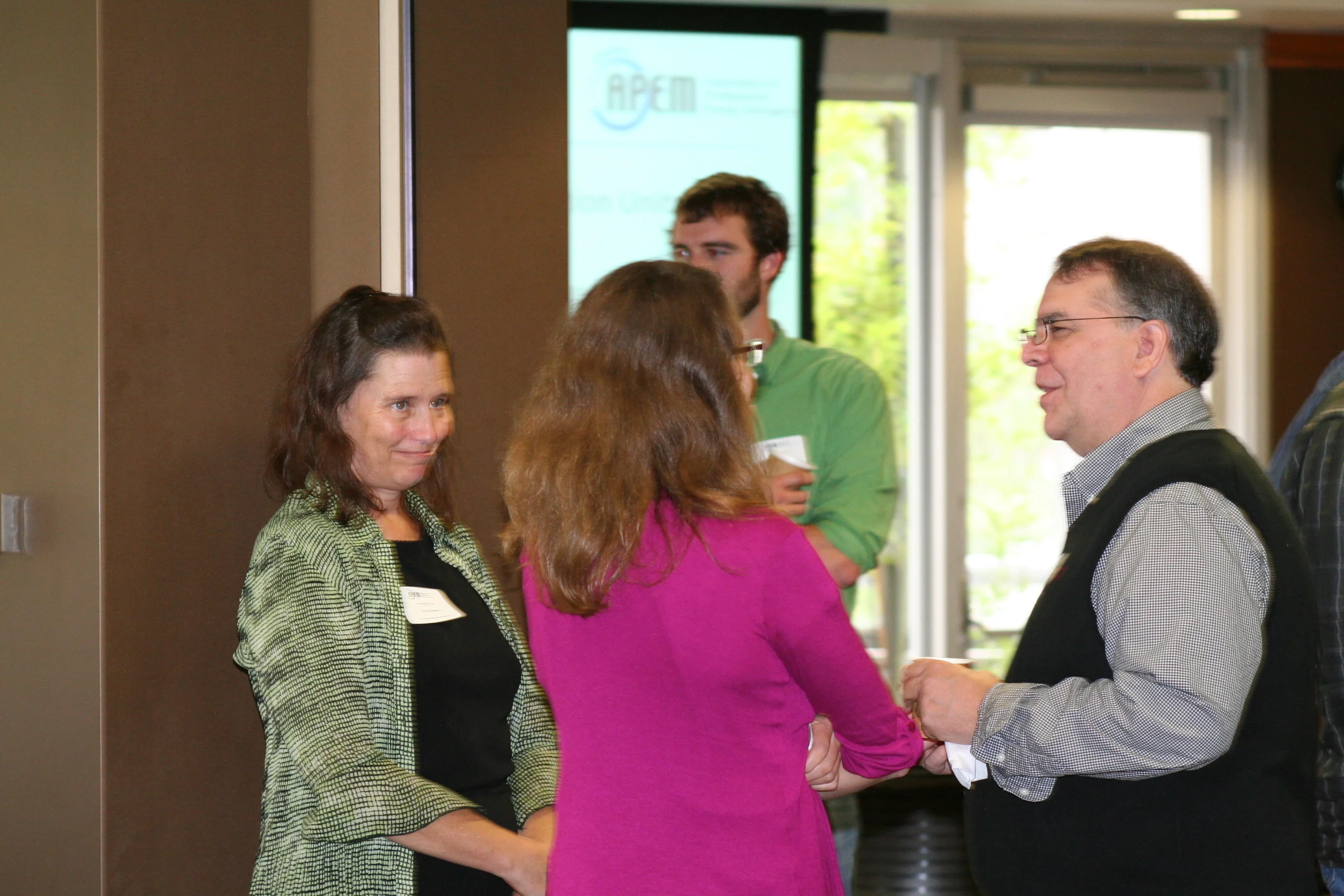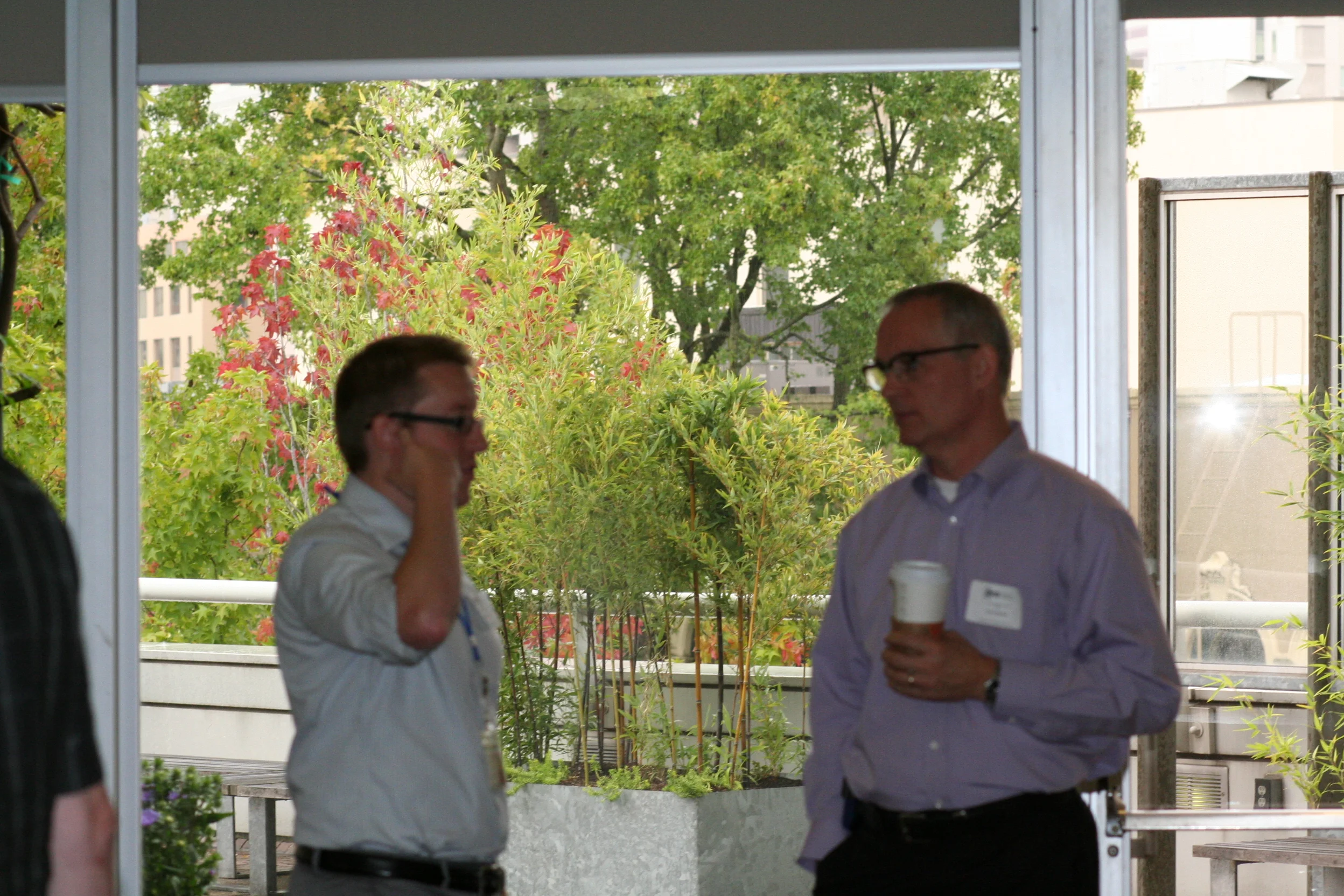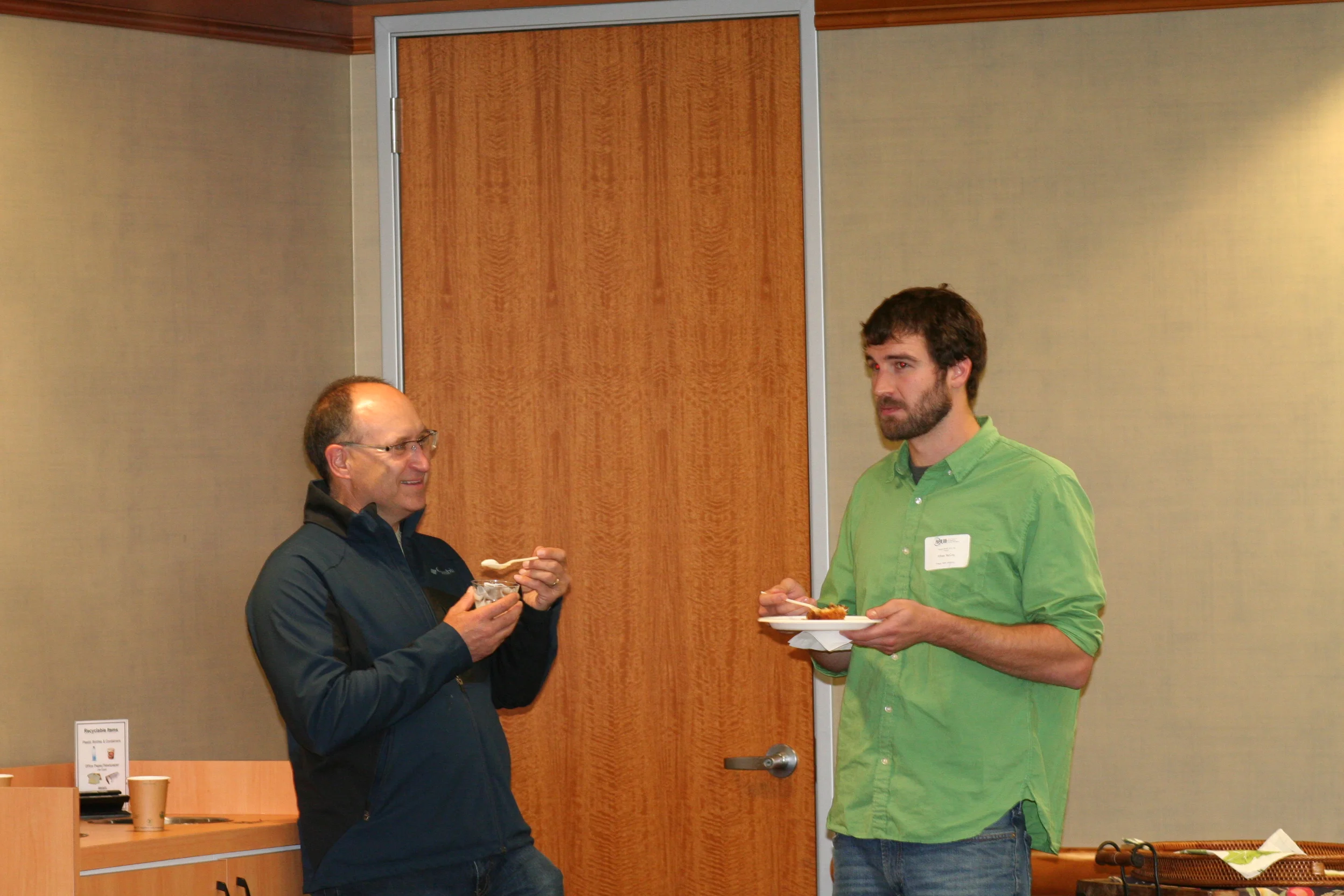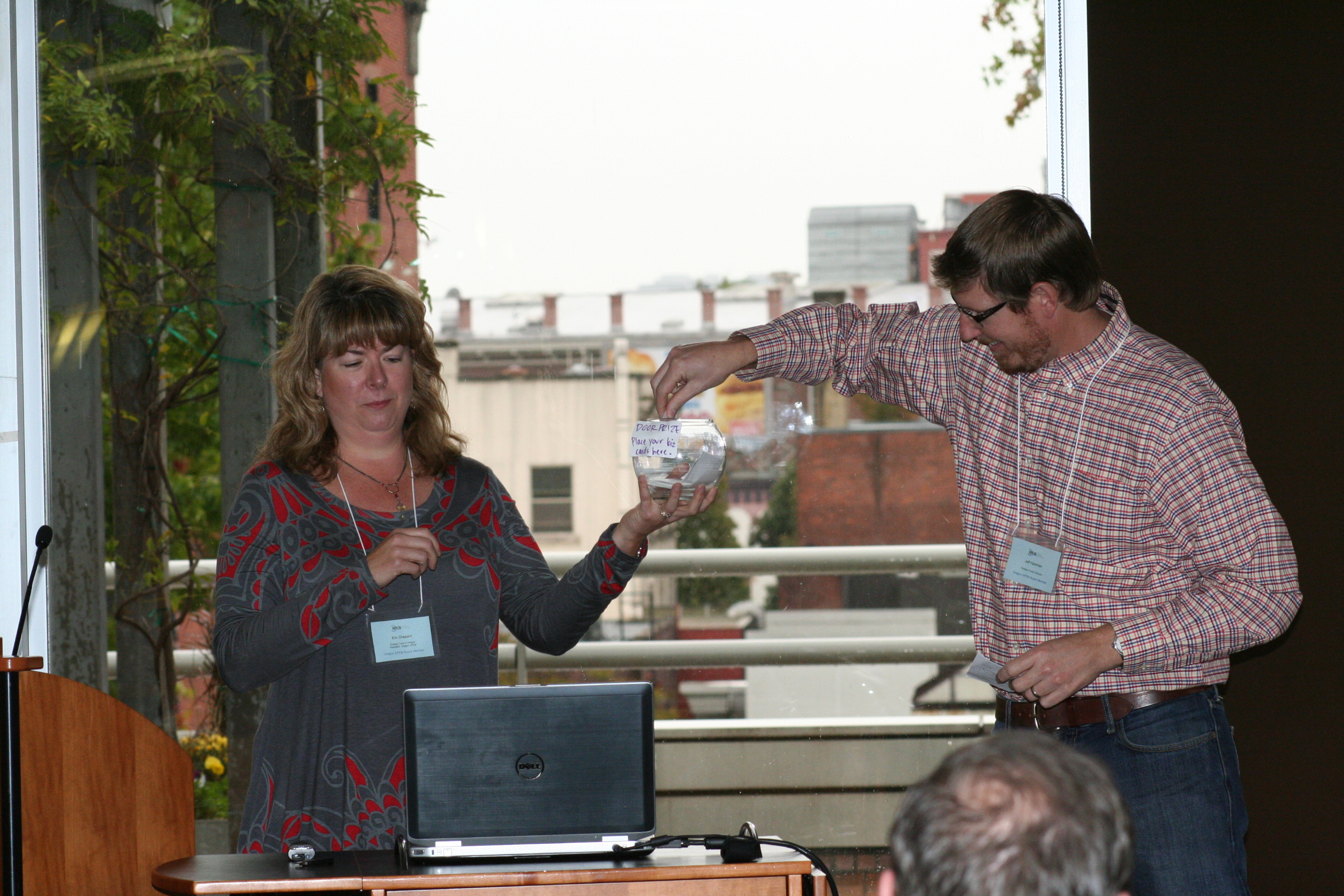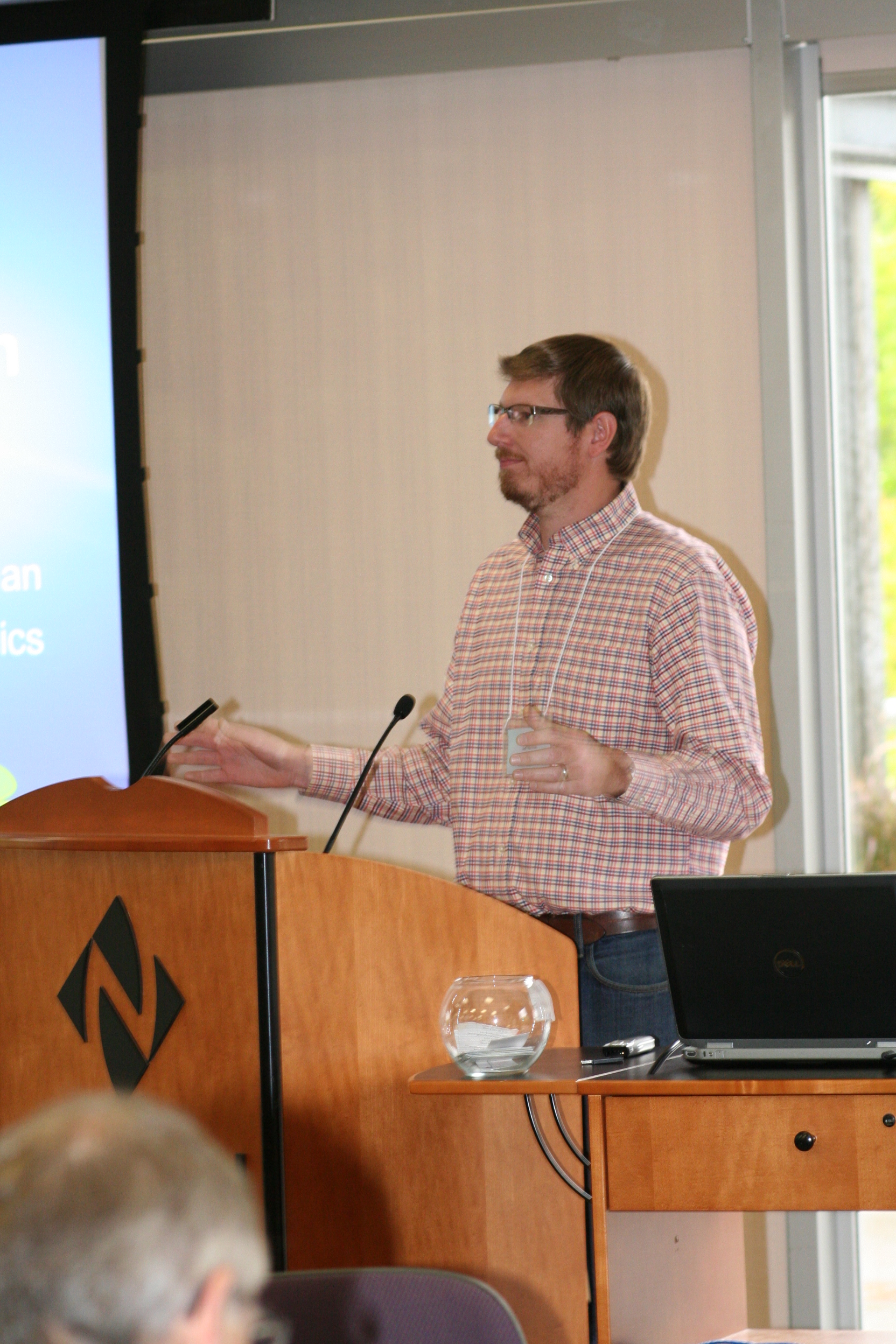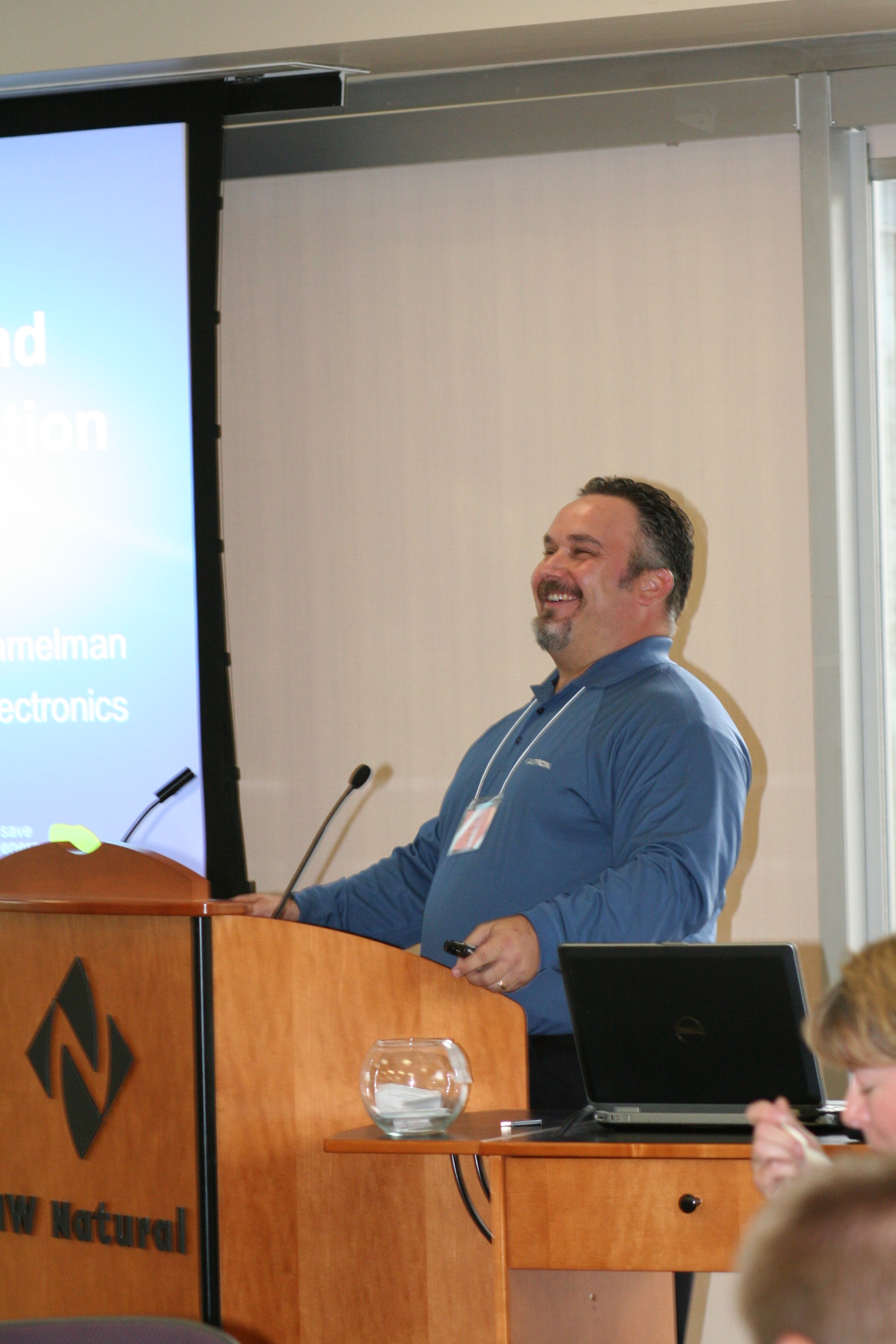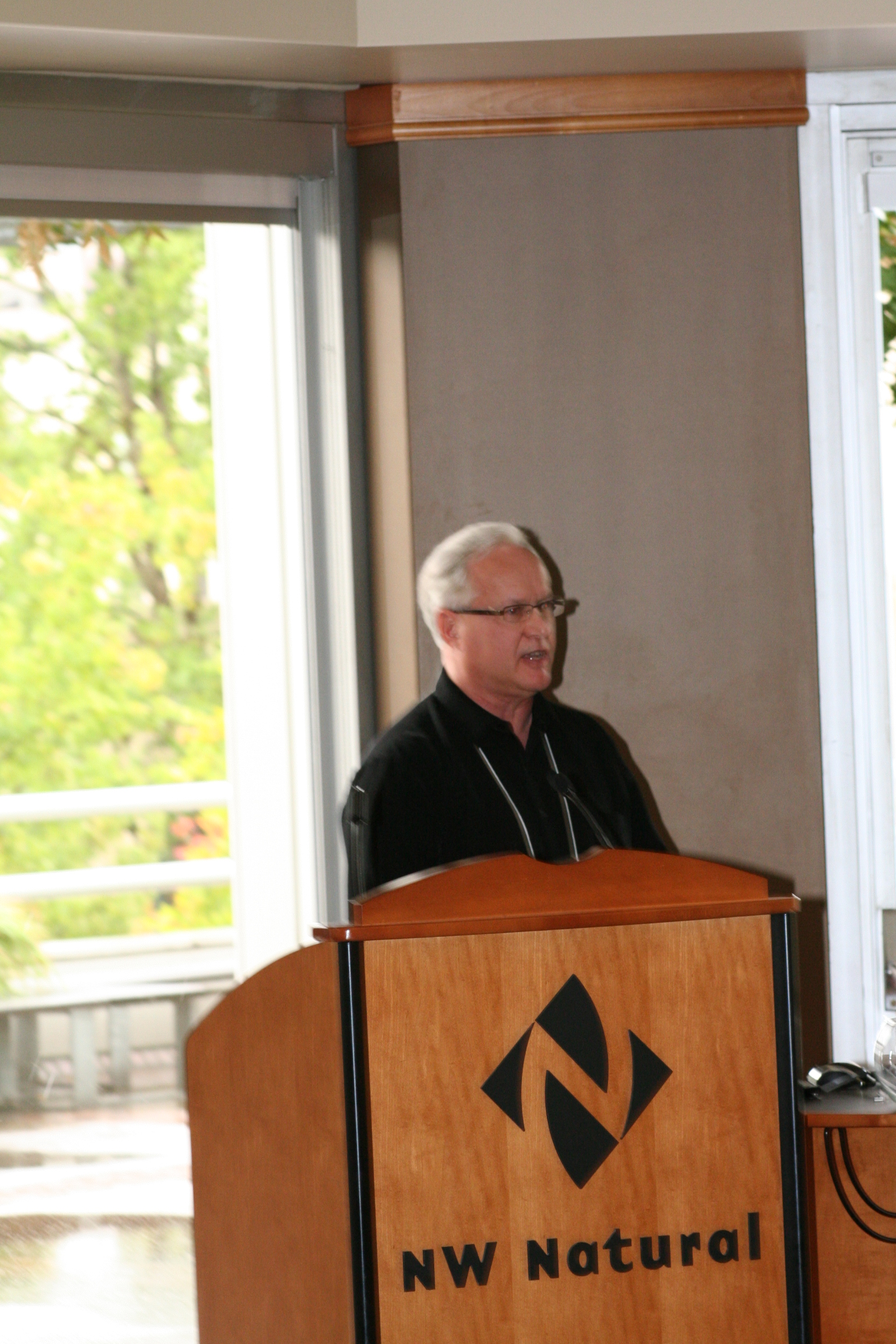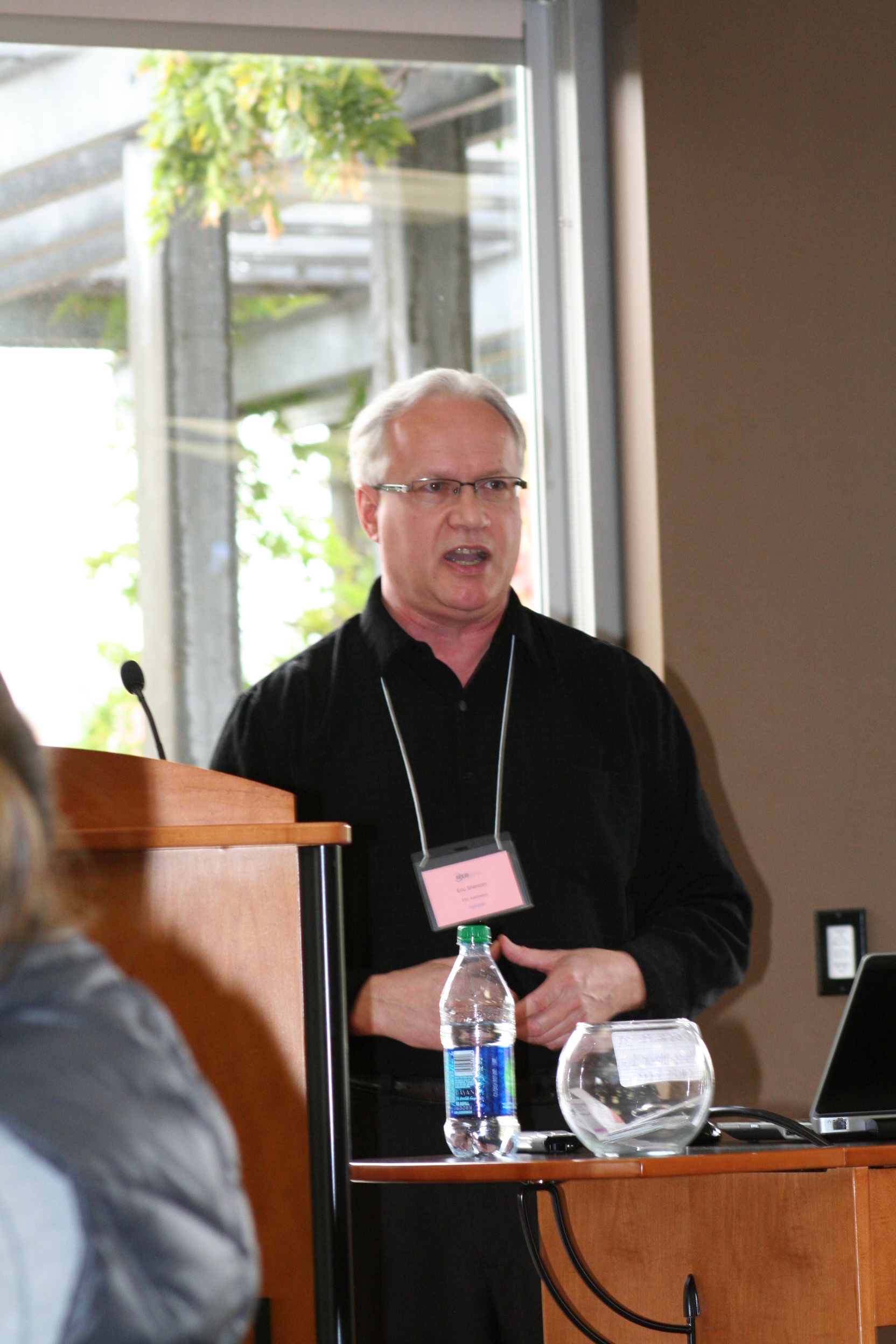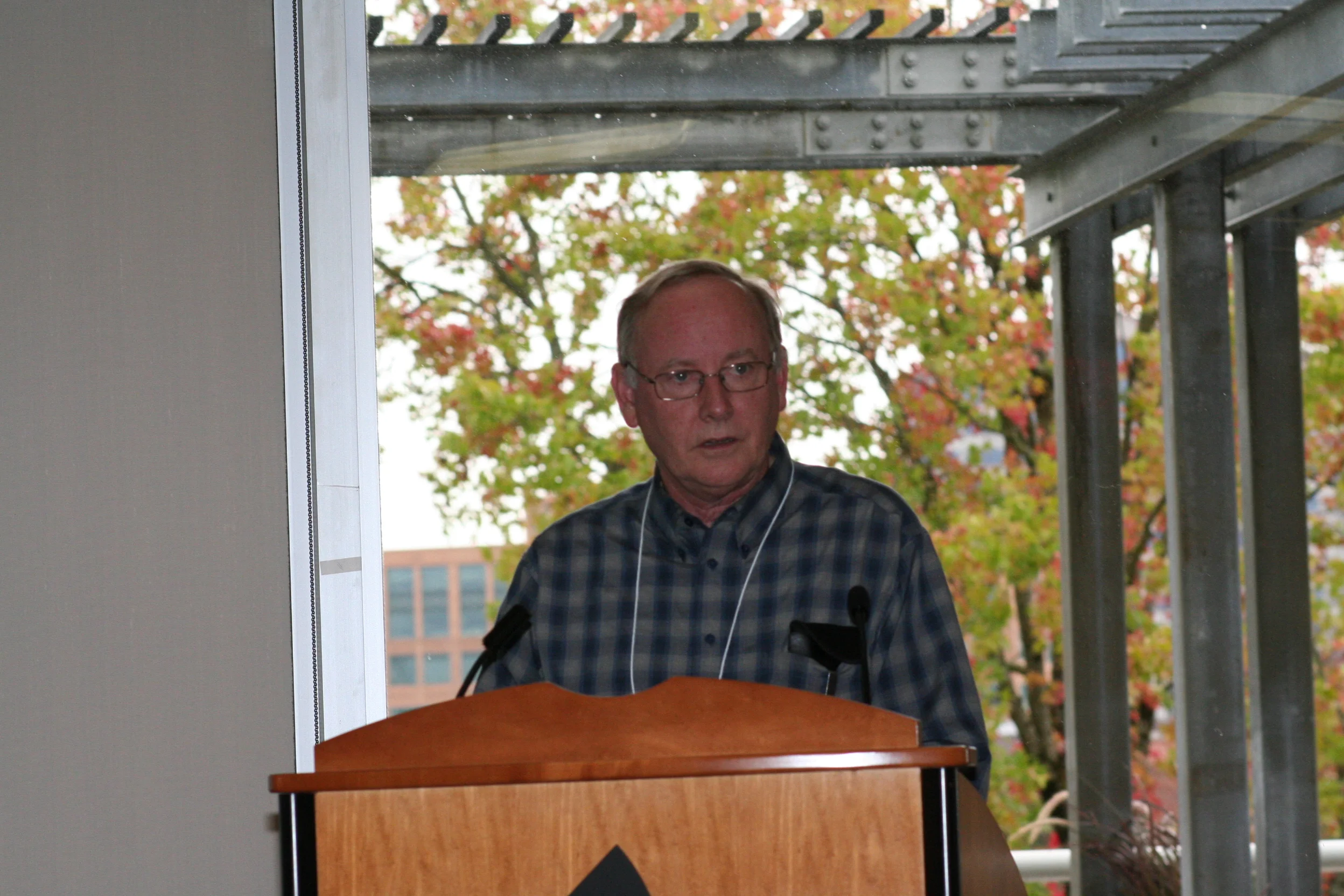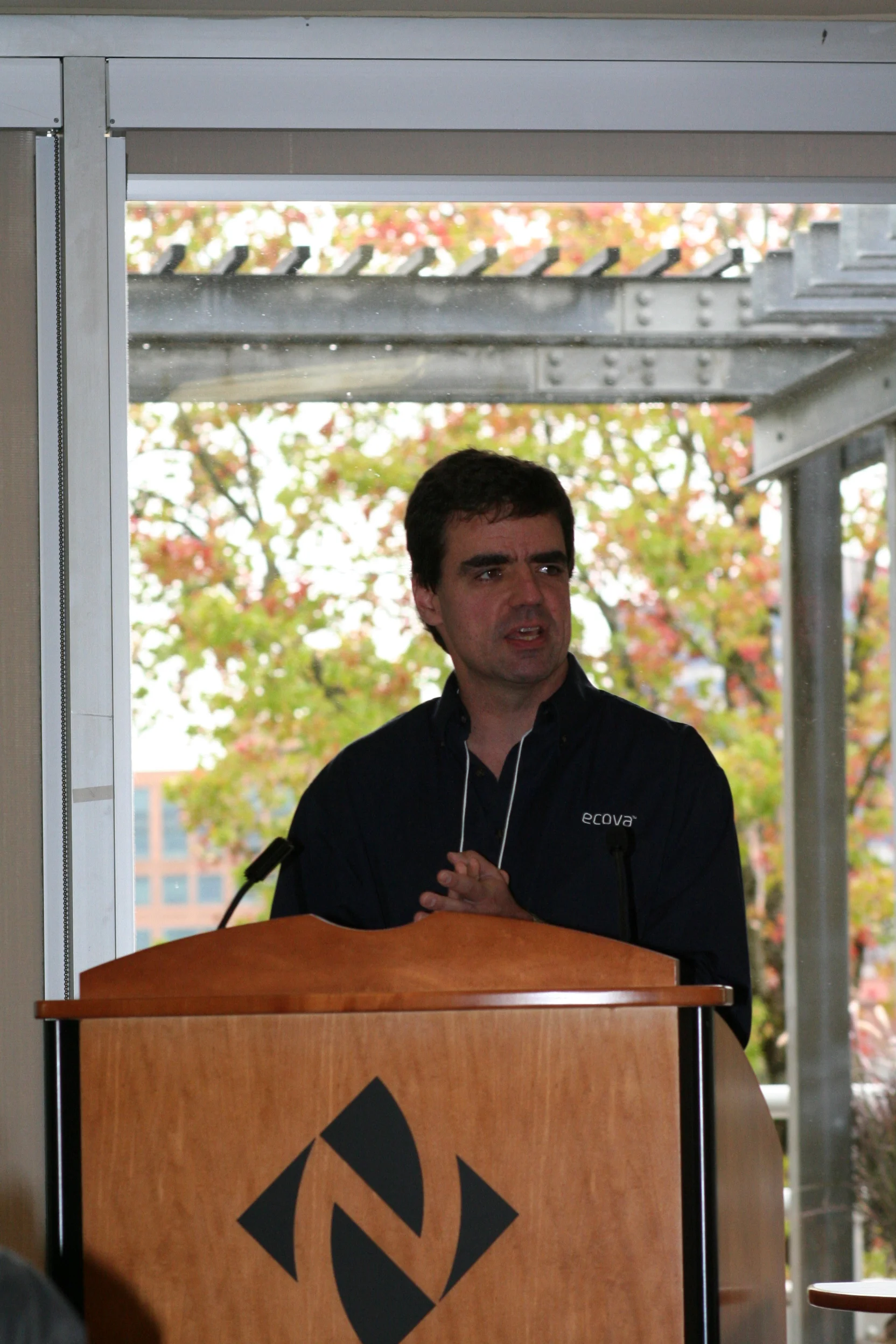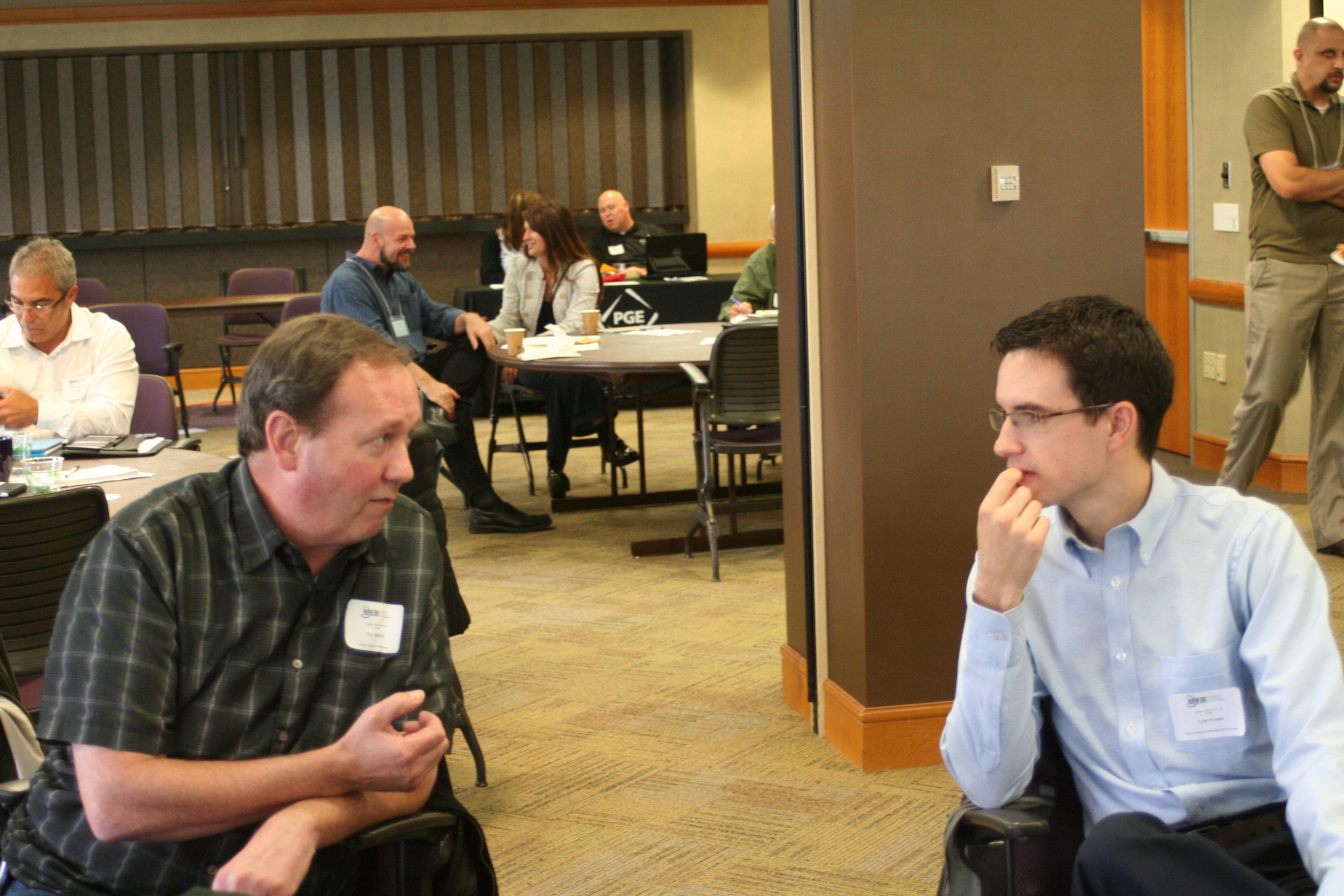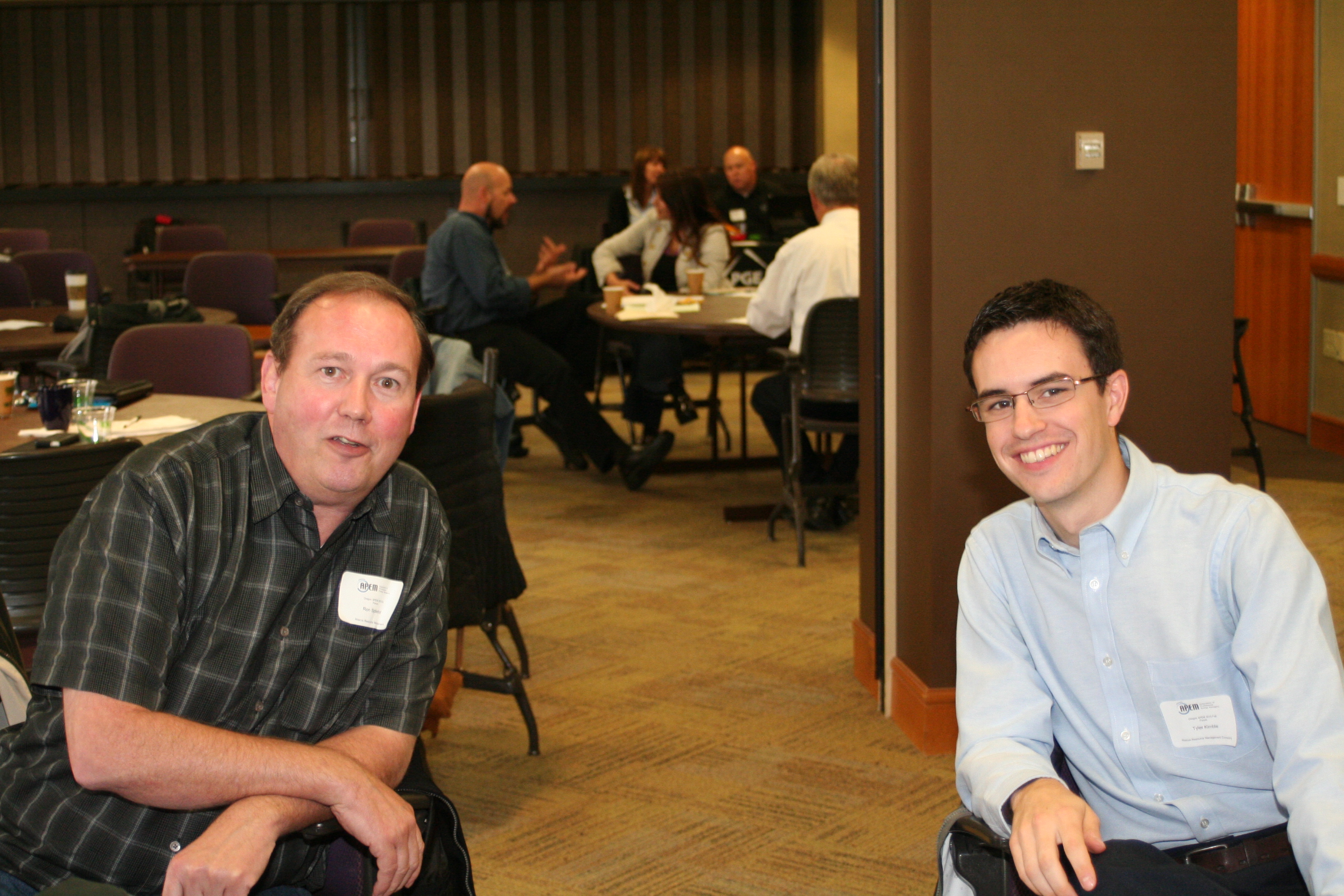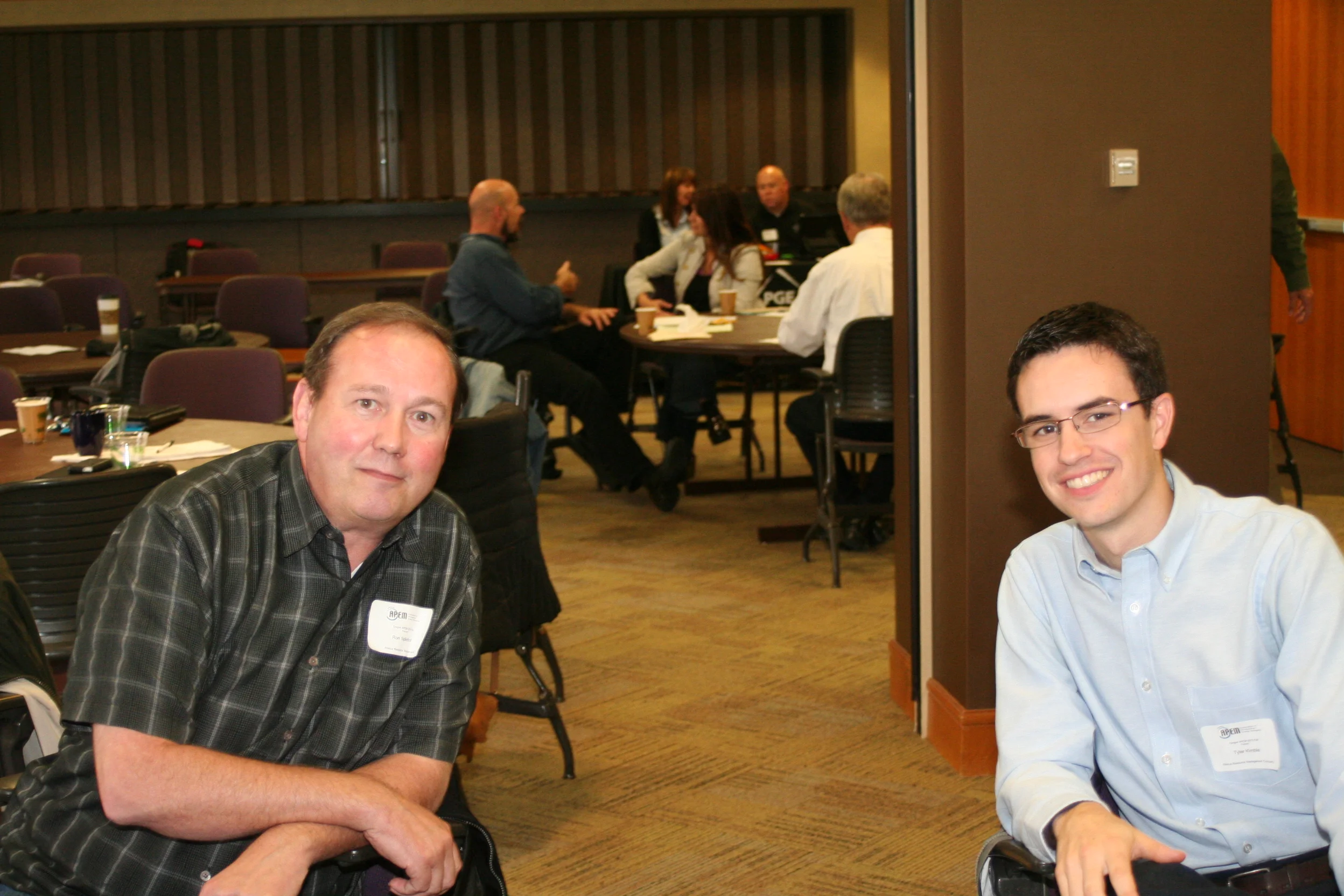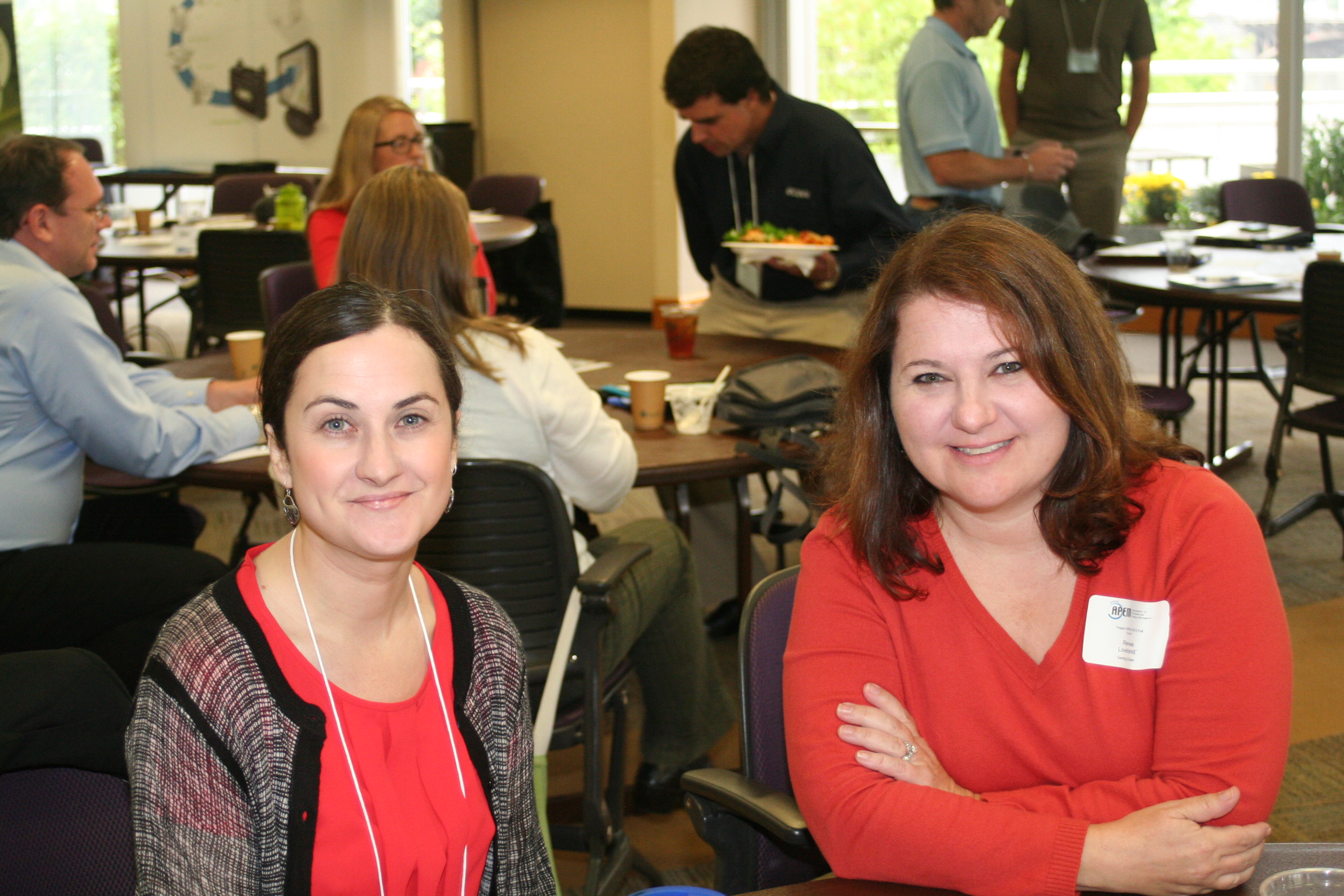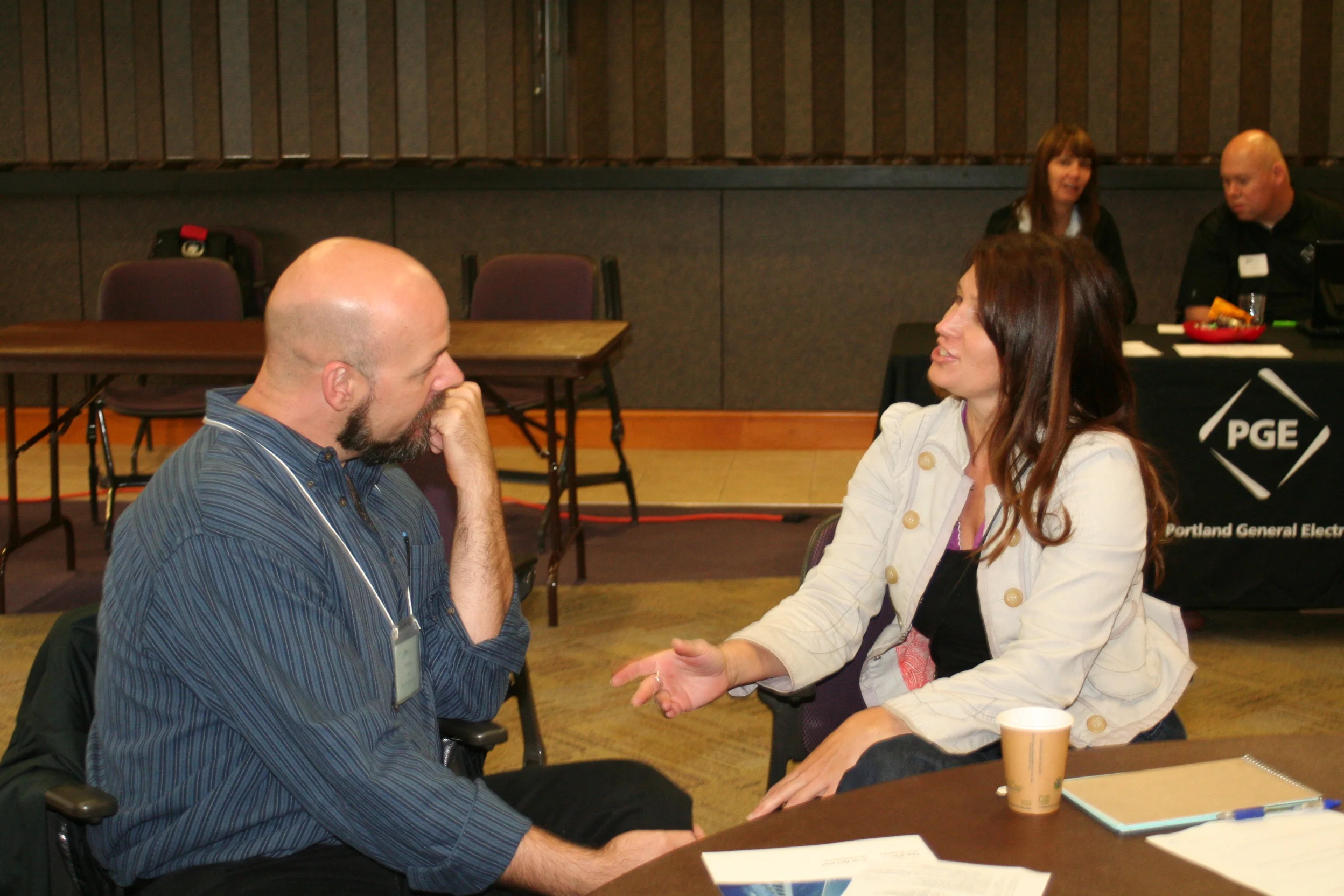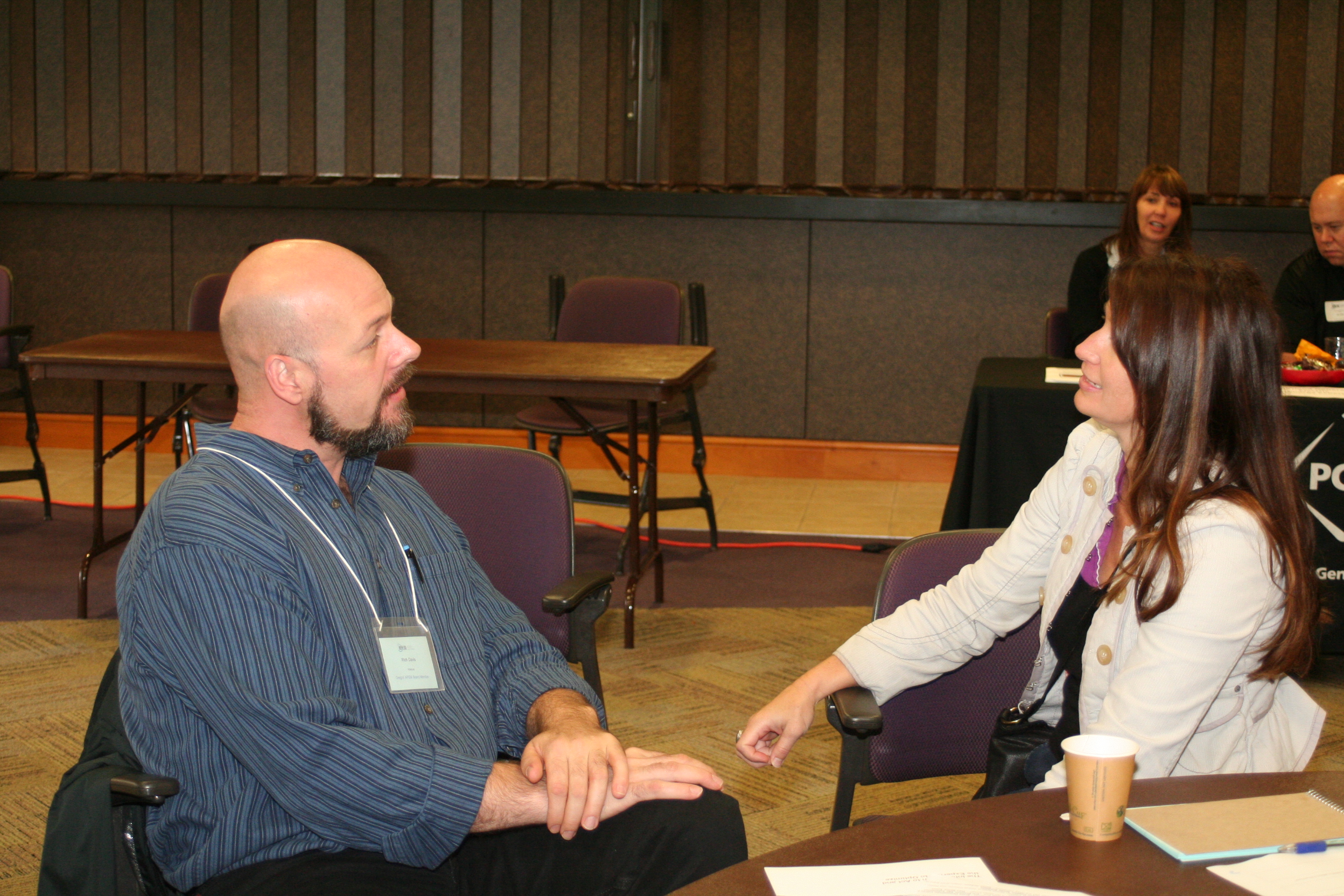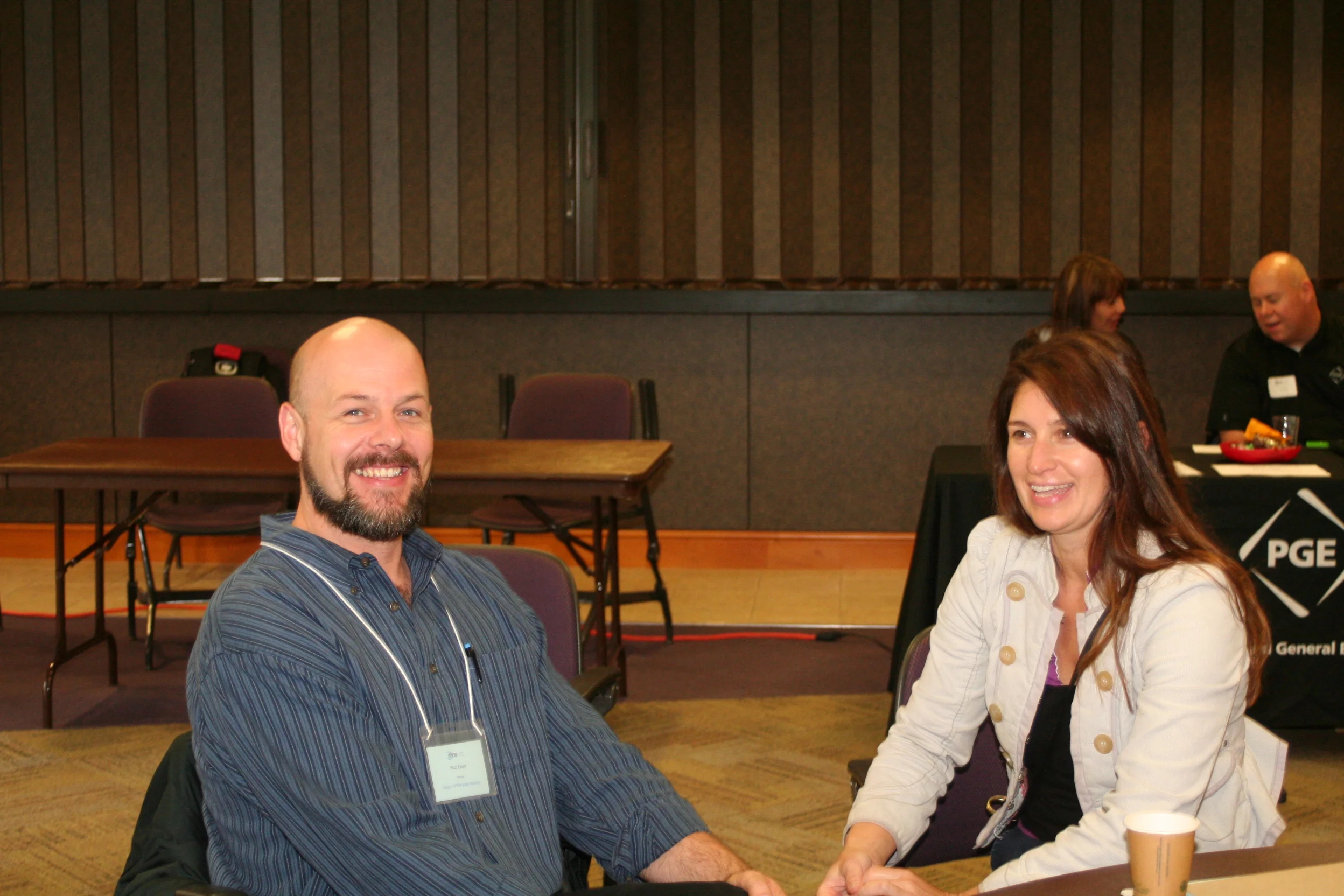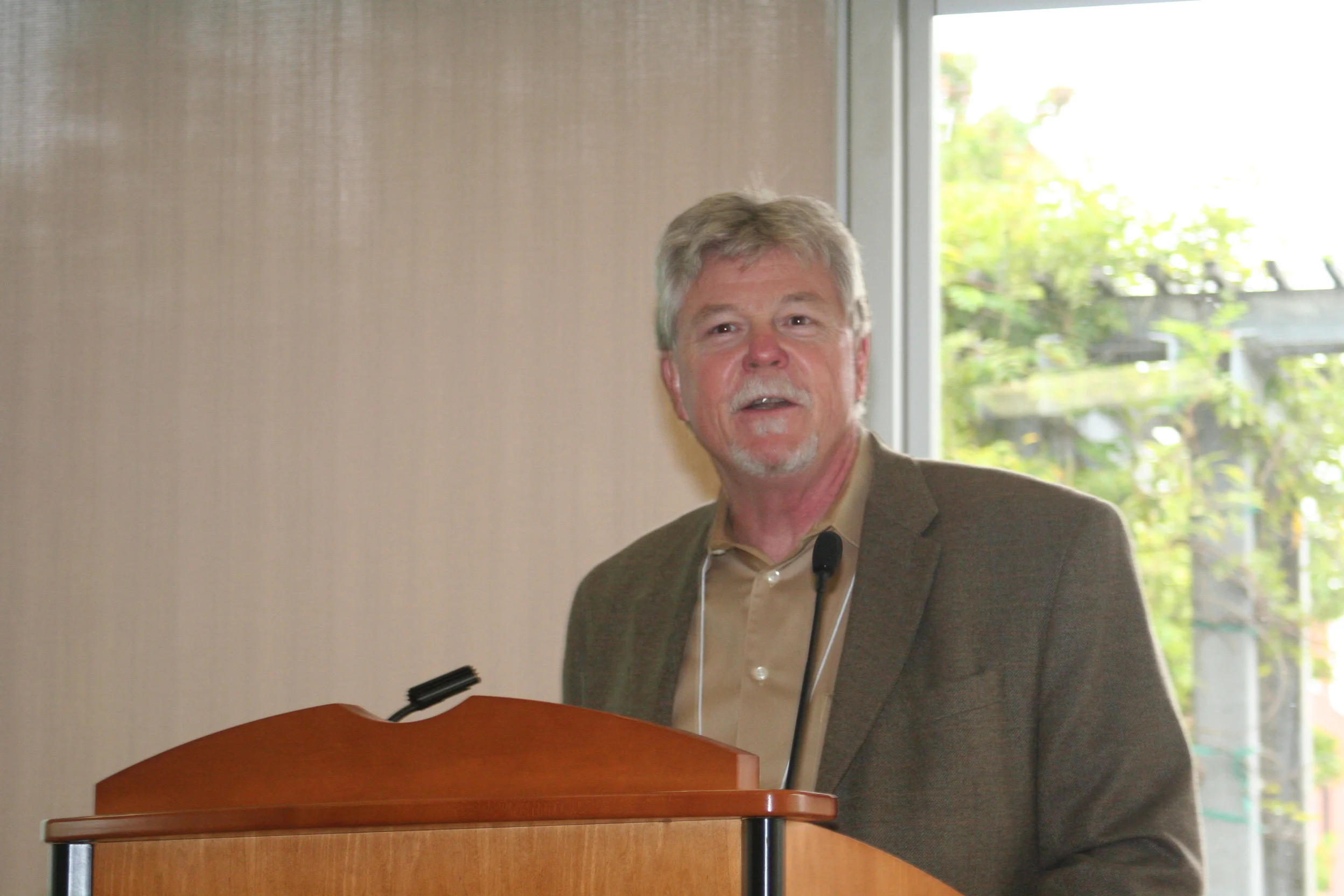Fall 2013 Forum
Real Time Energy: Utility Monitoring and Real-Time Data Collection
The value of energy monitoring systems as learning tools and their role in shaping tenant behavior
September 27, 2013
NW Natural Building, Portland
Held at the Pacific One Building at NW Natural in downtown Portland, the Fall APEM Forum examined new and exciting ideas in utilizing real time energy data monitoring. Several case studies were used to highlight successful building projects as well as lessons learned from the field. The use of real time energy data, user friendly dashboards and integrated systems were central theme throughout the forum.
Erica Dunn from Green Hammer, discussed her work in analyzing net zero buildings. Six public buildings in the U.S. were assessed,including a community college building in Western Oregon. Her goal was to identify the best practices for designing and maintaining net zero buildings. She also discussed the successful qualities of green screens – a monitor that displays real time and/or historically energy use about the building to the public occupants or building staff.
The impact of occupant habits was the main focus of her presentation. Occupant controlled thermostats, plug loads and lighting controls comprised the majority of occupant driven over consumption. She also expressed the need for an energy manager to actively operate and maintain a building in order to effectively manage energy consumption, minimize mechanical drift and reinforce occupant habits that are energy efficient.
Properly displaying real time energy use information to building occupants and operators is integral to success for a net zero buildings as well as for facilities/buildings that strive for better energy efficiency. Green screens can be an effective means of broadcasting information to large groups. When done well, green screens or dashboards can be powerful tools for effective building operations management.
Green screens and mobile apps are still being explored for effective use in multi-family residential buildings. Some residential dashboards use real time energy use to give tips, suggestions and notifications based on occupant behaviors. For example, a notification to a resident their television was left on past 11 p.m. or that it will be 80 °F the next day and to wear light clothing. The following are keys for a successful green screen:
-Where: Locate in common spaces where occupants may have a few idle minutes – near elevators, waiting areas, communal spaces.
-What: Information presented should be comparative; goal oriented with data in short byte sized pieces and offers actionable items.
-How: The information should be passive and simple enough to be understood at a glace.
- Why: Green screens and dashboards created occupant engagement, community involvement and pride. It can create a healthy platform for peer pressure to be more energy efficient.
See Her Presentation
Earl Gray from Honeywell discussed how integrated building systems could dramatically impact the bottom line. He emphasized the importance of having a Master Systems Integrator (MSI). This system includes a central networked buildings system, a company methodology for building energy use and a central person to orchestrate and facilitate the process, both in the short and long-term life of the building(s).
A successful MSI, according to Gray, starts with network level integrated services for building automation. There needs to be a plan that ensures new equipment and products are compatible. Defining a standard for protocols, equipment and systems can help to ensure smoother sailing in the future when expansion or renovation projects are under way. He stressed the importance of graphical representations of building systems and real time energy use data to improve the facility operator’s comprehension of the current energy use and historical nature of the building.
Gray also highlighted the need to “change the way we buy things.” Be more cognizant of purchasing decisions and not relying on how things were done in the past. Lastly, Gray highly recommended having a single staff member responsible for the MSI system is critical to the success of energy management. See His Presentation
Bruce Hemmelman of Lutron Electronics shared an interesting perspective on lighting applications and real time energy use data. In a commercial setting, using real time and granular data, Lutron identified that occupant controlled lighting and collaborative employee work lead to a reduction in energy use and artificial light related health issues for employees. Another case study highlighted an LED retrofit in an office space. They reduced the typical over lit workspaces but it was the adding of individual workspace lighting controls that had an unexpected outcome. Real time energy monitoring showed that when one employee lowered the workstation lighting levels, other employees around them did the same.
Hemmelman’s recommendation is to have a pre, during and post construction or retrofit plan for energy management. There has to be a focus towards a holistic approach to incorporating energy efficiency strategies whether it’s a lighting upgrade or integrating real time energy management into a building. To be successful , an organization needs to develop energy goals, have a sequence of operations, commit to tracking and reviewing information and be willing to adapt. Training staff and tenants to use the space efficiently is often a missed opportunity in energy savings. Real time energy data allowed Lutron to draw meaningful insights to how lighting energy was being used and altered throughout their studies. See His Presentation
Eric Shimmin from ESC Automation provided an in depth look into the developing world of real time energy use dashboards. He discussed the differences in format and objectives for the two main styles of dashboards – public and technical.
Public dashboards are intended for public information and education. Typically they are large screens in common areas, like lobbies, main entryways or waiting areas. They display the building’s historical energy data, real time energy use and can be interactive. Building managers are finding new and innovative ways to make green screens more engaging. An example given by Shimmin included a primary school installing interactive kiosks for students. The kiosks have age appropriate games and quizzes for students to learn about building energy and conservation practices. Another school installed a glowing light that displayed different colors based on real time energy use data. The colors represented whether the occupants were meeting their energy use target or not.
Other public style dashboards also include those used in multi-family housing complexes. One example given was a housing complex where residents were allotted a set amount of energy per week before a fee was added to their utility bill. Energy use was displayed on a communal dashboard in such a way that residents could gage if they were within their weekly energy quota as well as how their energy use ranked compared to their neighbors. Most dashboards provide local weather and other helpful information for reducing energy consumption.
The purpose of a technical dashboard is different from public dashboards. Here the purpose is to quickly convey real time data to facilities and operations managers. Operators use this information to make changes to systems in order to decrease demand and/or consumption. For the technical dashboard, it is important to format the information so it is relevant to the specific user and allows them to make meaningful conclusions.
Shimmin also stressed the need to present real time data in multiple aspects to assist staff in fully understanding a problem. For example, viewing a schematic of air-handling units (AHU) in terms of air and coil temperatures as well as real time energy use of the total system. A case study shared about a gym had the AHU control system showing comfortable space temperatures in the building with no apparent issues. Real time energy data would have exposes that both the AHU heating and cooling coils were running simultaneously. Real time energy data could have identified this problem within hours, potentially saving hundreds of dollars in utility bills.
Shimmin also discussed the emerging world of virtual metering. Here real time energy use data combined with the building mechanical data – like air temperature in ducts, pump pressure, etc. – could be used to mathematically submeter a building. See His Presentation
Mike Bailey from ECOVA provided forum attendees with two valuable real time energy data case studies about two Oregon based Co-Op food processors. Both Co-Ops had contracted ECVOA to provide an energy audit and analysis to make facility level and operational changes to decrease energy consumption. One company (Plant A) made huge improvements in decreasing their energy consumption while the other company (Plant B) was hampered by barriers and unable to make any head way in decreasing their energy consumption.
Plant B was hindered by the inability to change and accept input from an outside source. According to Bailey the following created much resistance to making energy use improvements for Plant B:
-Lack of upper management support.
-Bad set points and settings on equipment.
-An unwillingness to change these settings based on the “That’s how we’ve always done it” mentality.
-Poor purchasing choices and decision making from management.
-No real time data. Difficult to allocate utility cost and usage to individual equipment or processes.
Plant A on the other hand, took the newly acquired auditsand real time data and ran with it. One key factor in making large-scale changes to their energy use was viewing a chart of the time frames in which different crops where processed. Looking at the historical and real time data from different angles identified that certain crops could wait a few hours and not be processed in overdrive, during peak hours. These revelations lead to better communication with their growers as to when to harvest and deliver crops.
Plant A used real time energy data to developed equipment schedules and operation plans to maximize operational efficiency while maintaining a quality product. Viewing the real time energy data allowed operational and facilities staff to correlate how changes in the plant affected the utility bill. These changes led to new operational standards and recognized financial savings.
Mike Bailey’s keys to utilizing real time energy use:
-“Seek First to Understand” what drives energy use.
-Data is not helpful if it is not converted into useful information.
-Data without systems knowledge is useless.
-Change and improvement begins and end with people.
-A willingness to act on new data and make changes.
-Upper management support is critical.
See His Presentation
Wayne Duggan of Apollo Solutions wrapped up the forum with some valuable take-a-ways about incorporating real time energy into a building. He expressed the importance of real time energy systems and equipment that are compatible and able to integrate with each other. He explained the importance of understanding protocol, using systems that are fully programmable and to make things simple. He stressed the importance of making the system and dashboard information applicable to the building managers and operators who would be utilizing the real time energy data to make changes.
The forum was concluded with a group discussion about themes throughout the presentations and break time conversations. There were several recurring messages throughout the day relating to real time energy data use:
-Simple, clear and actionable energy goals derived from real time data.
-Importance of meaningful data to drive actions.
-Having a dedicated building(s) energy manager.
-Organizational teamwork around energy management actions, protocols and plans.
-Have a plan to incorporate real time energy use into the building system.
-Data represented visually that can be quickly interpreted. -Ability to think outside the box, view data in different ways to see an issue ina new light.
-Ability to adapt and change.
Presentations:

